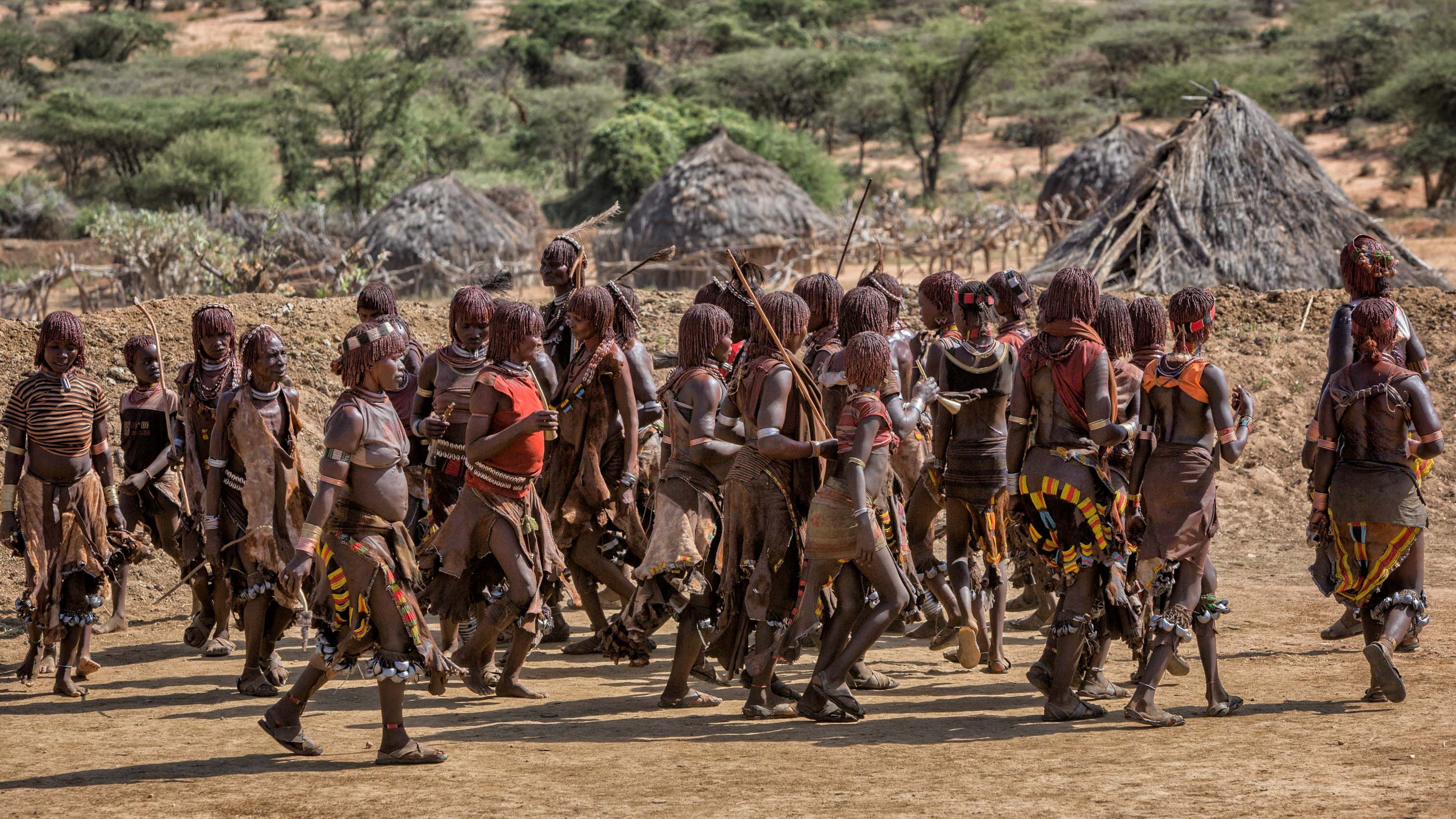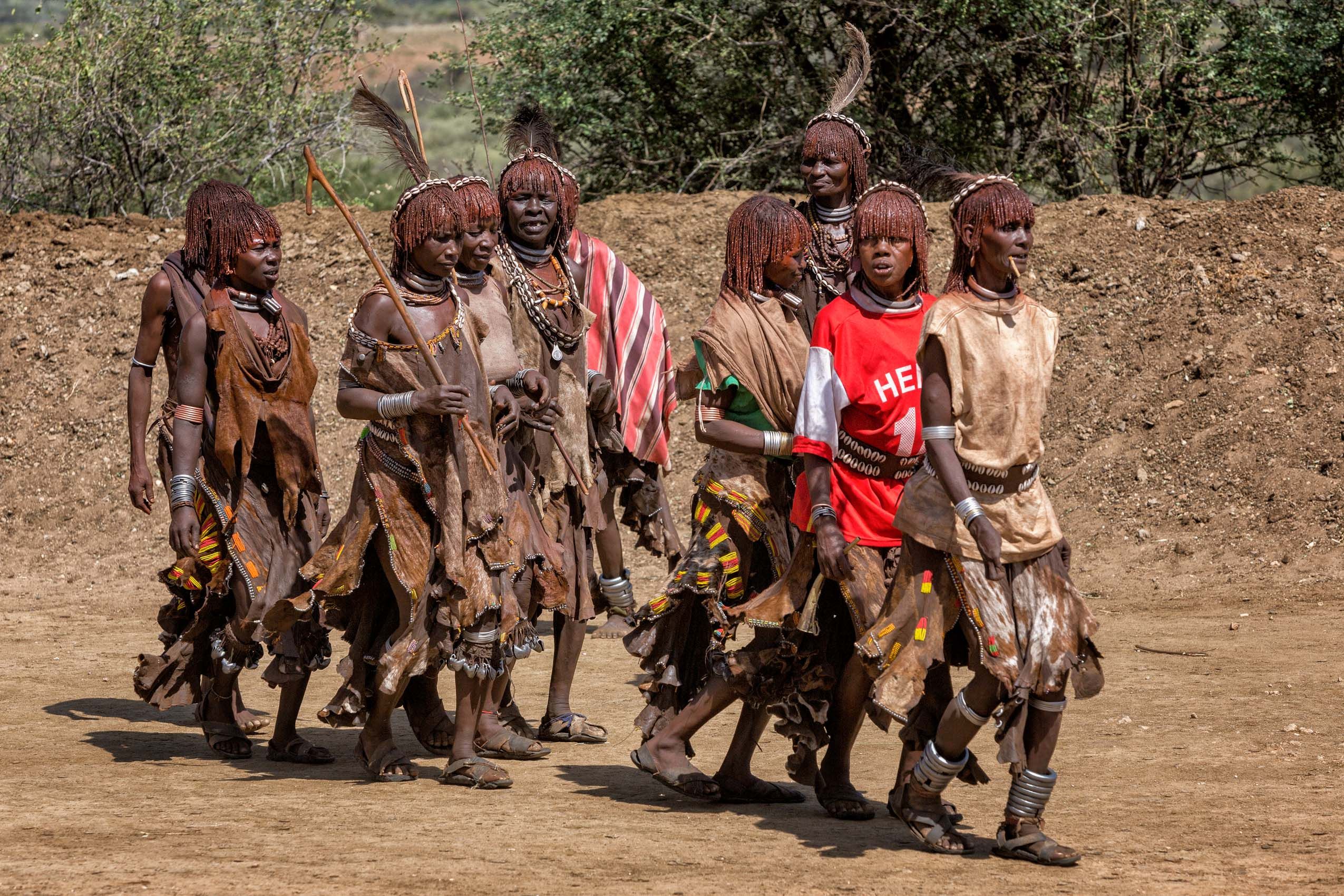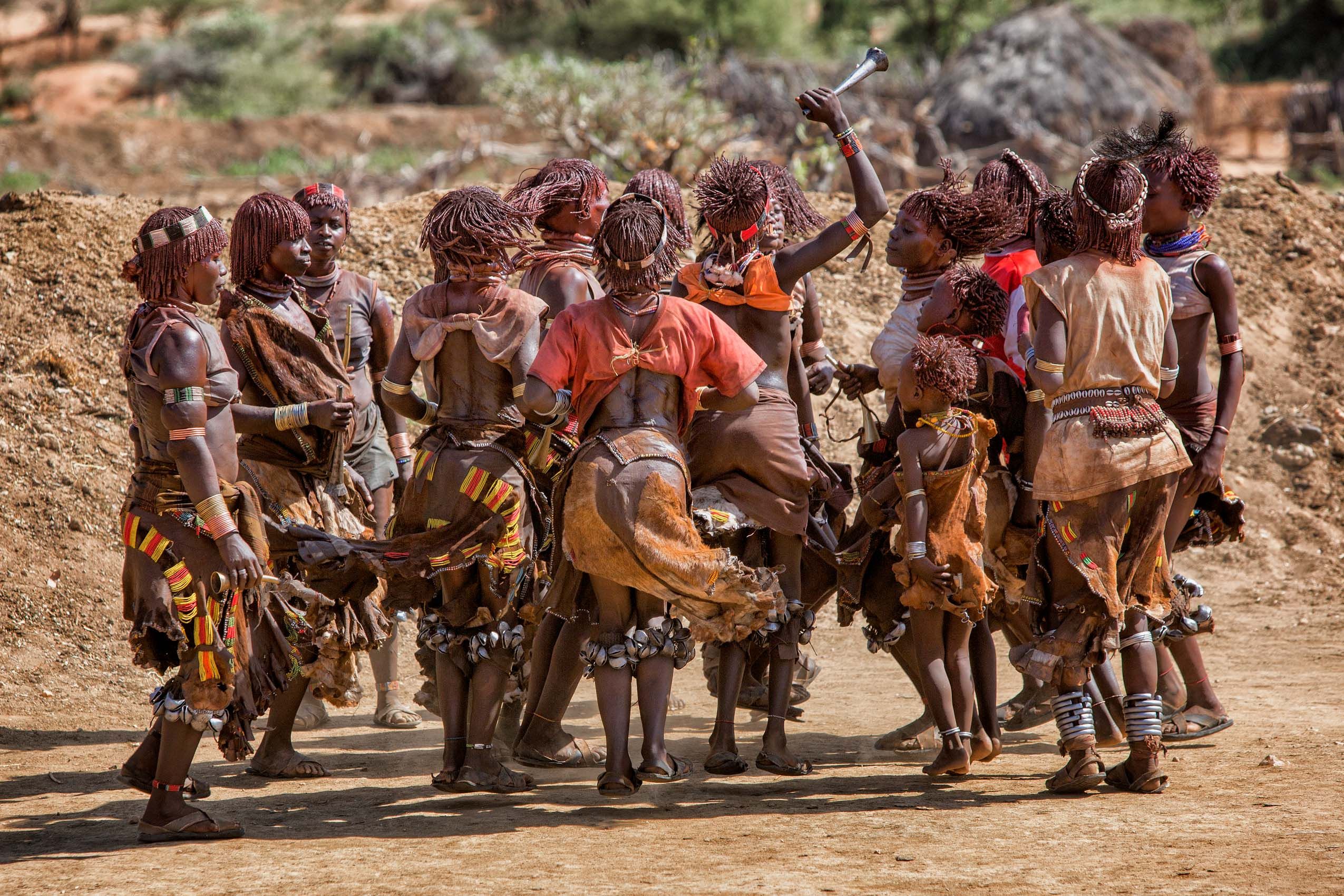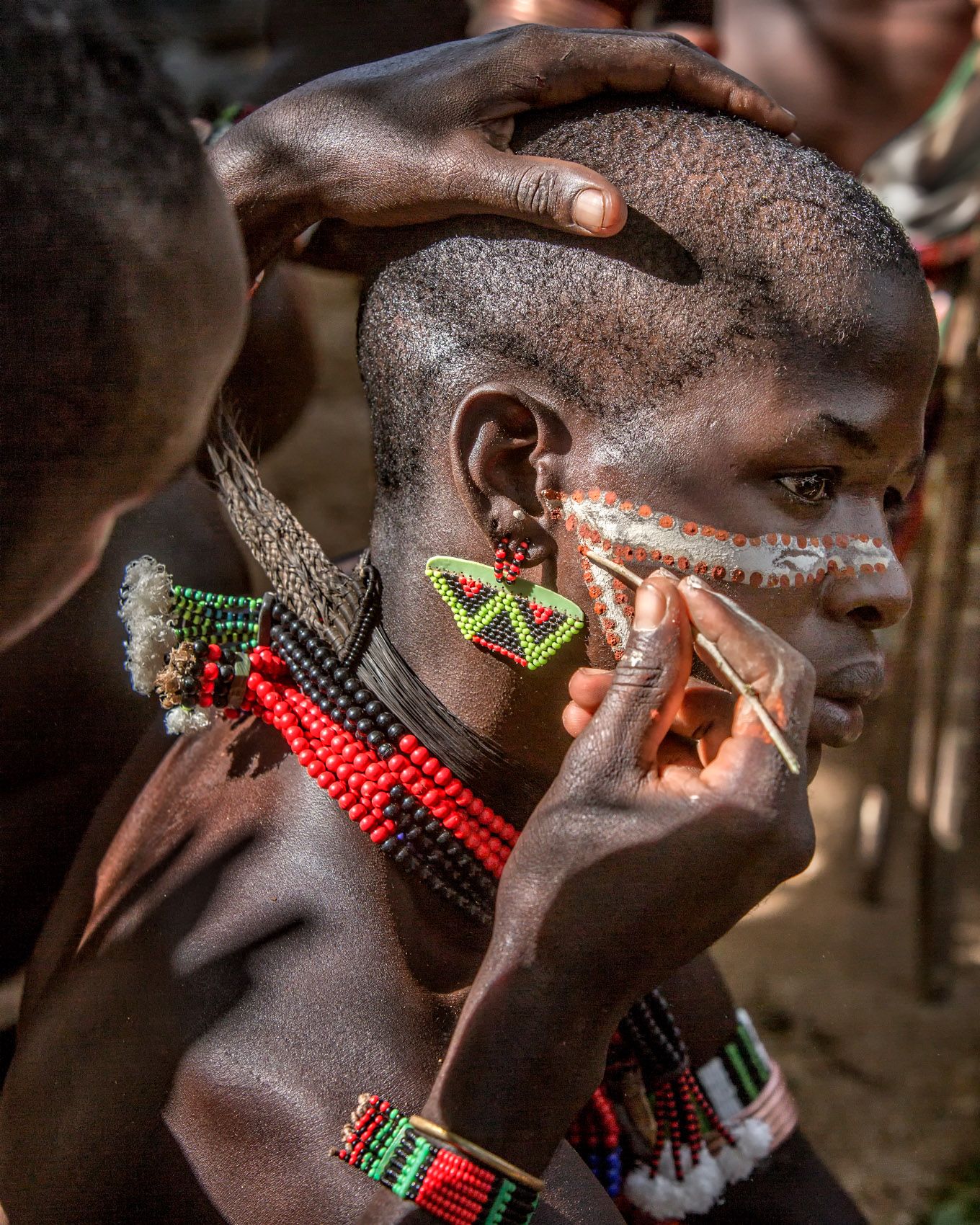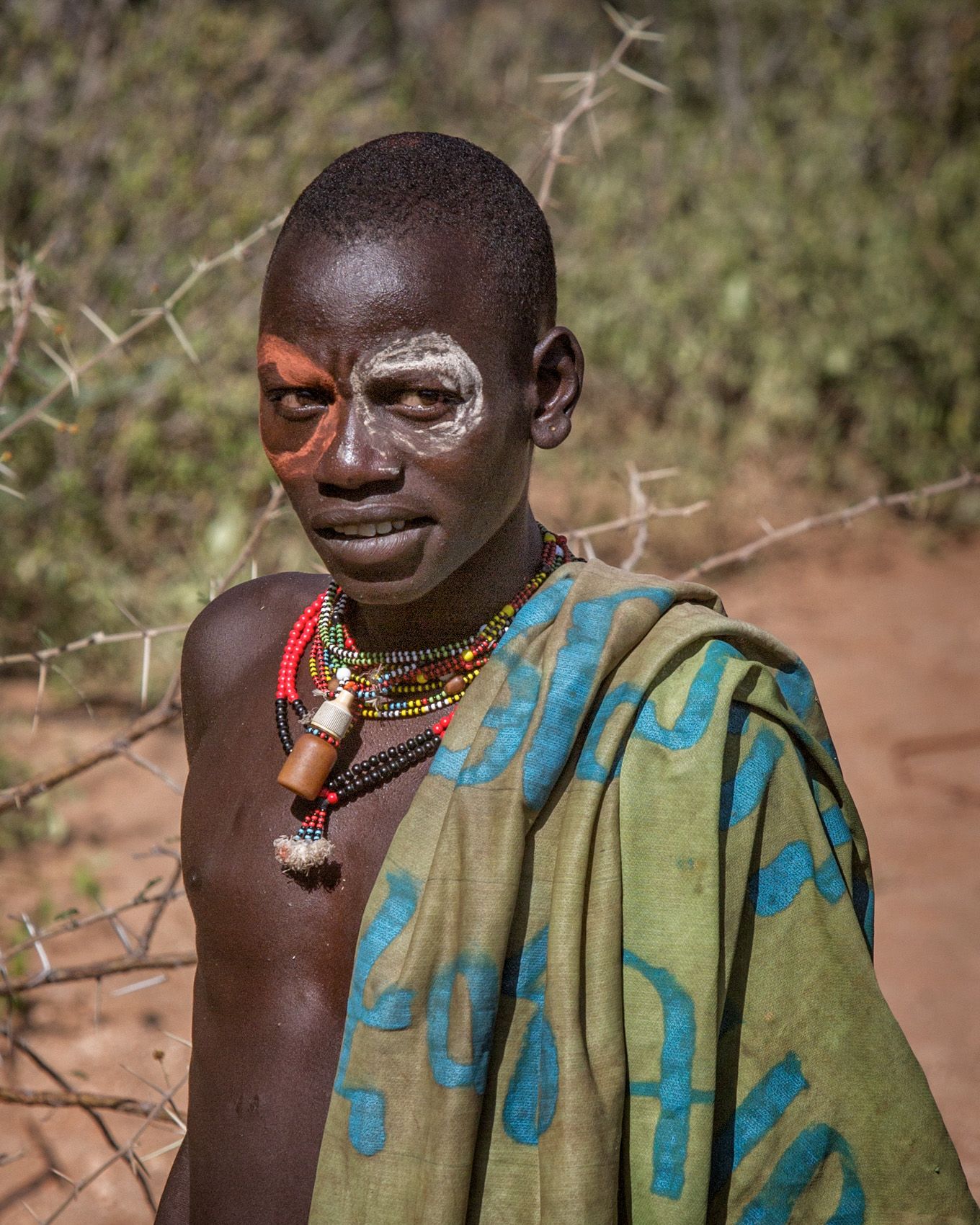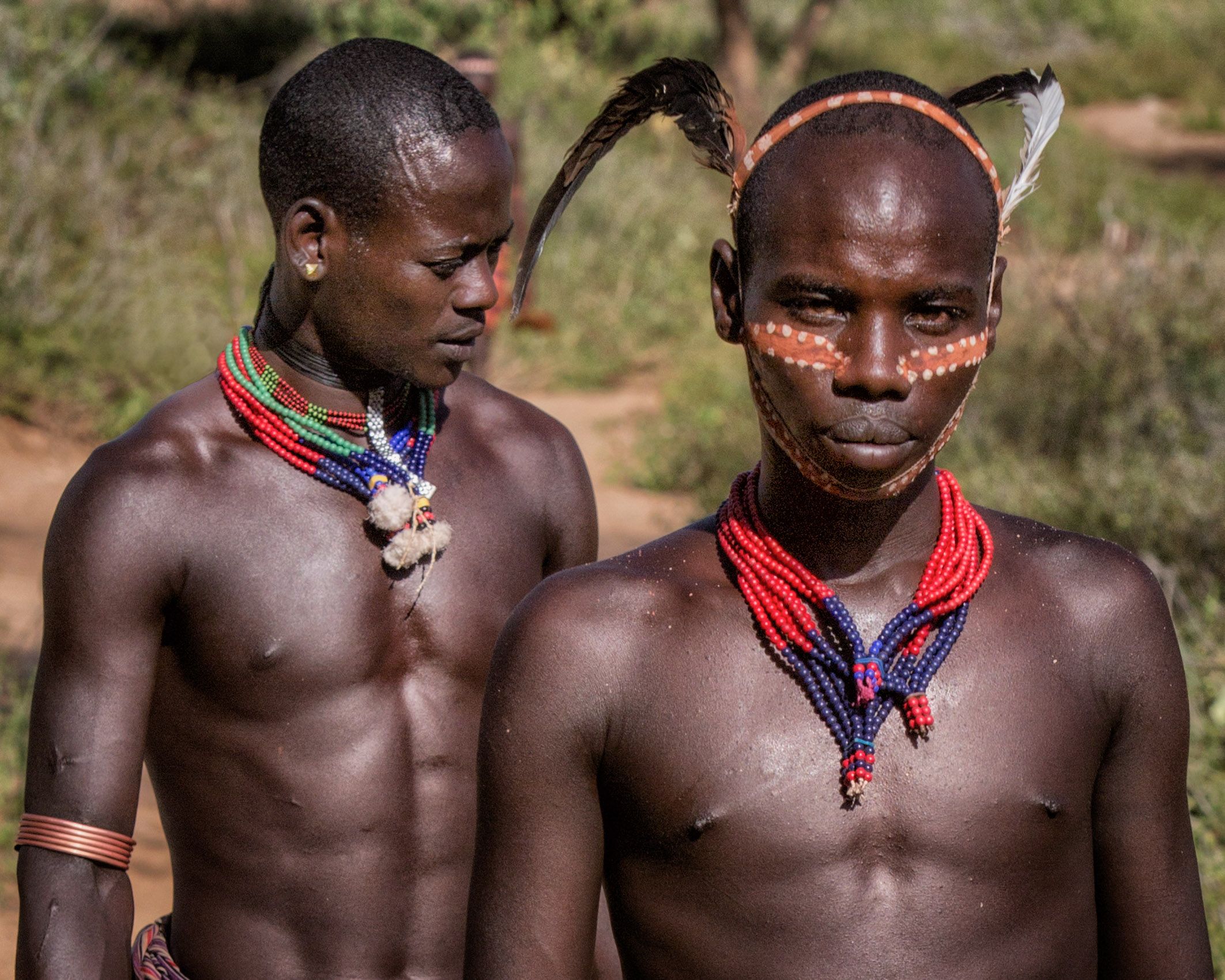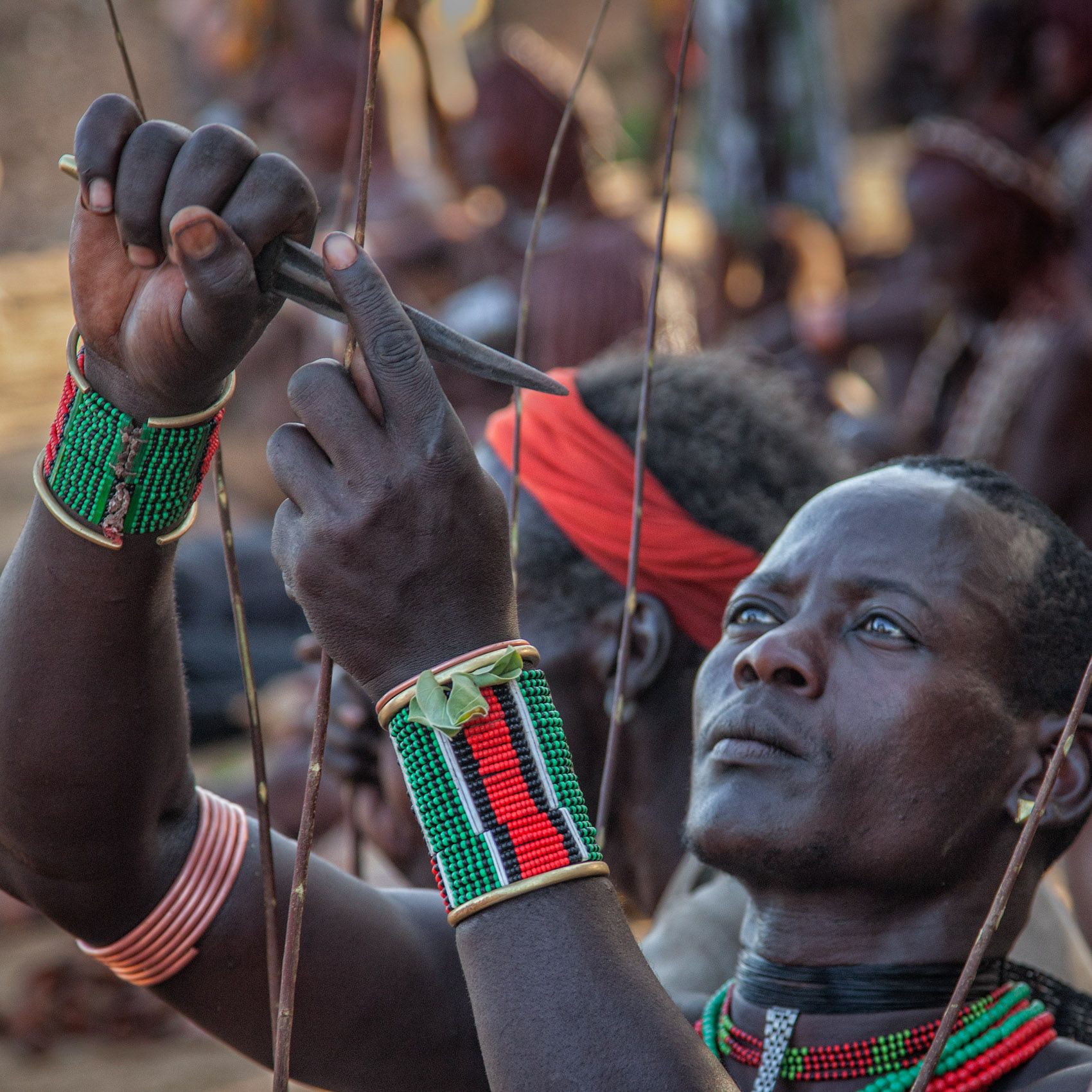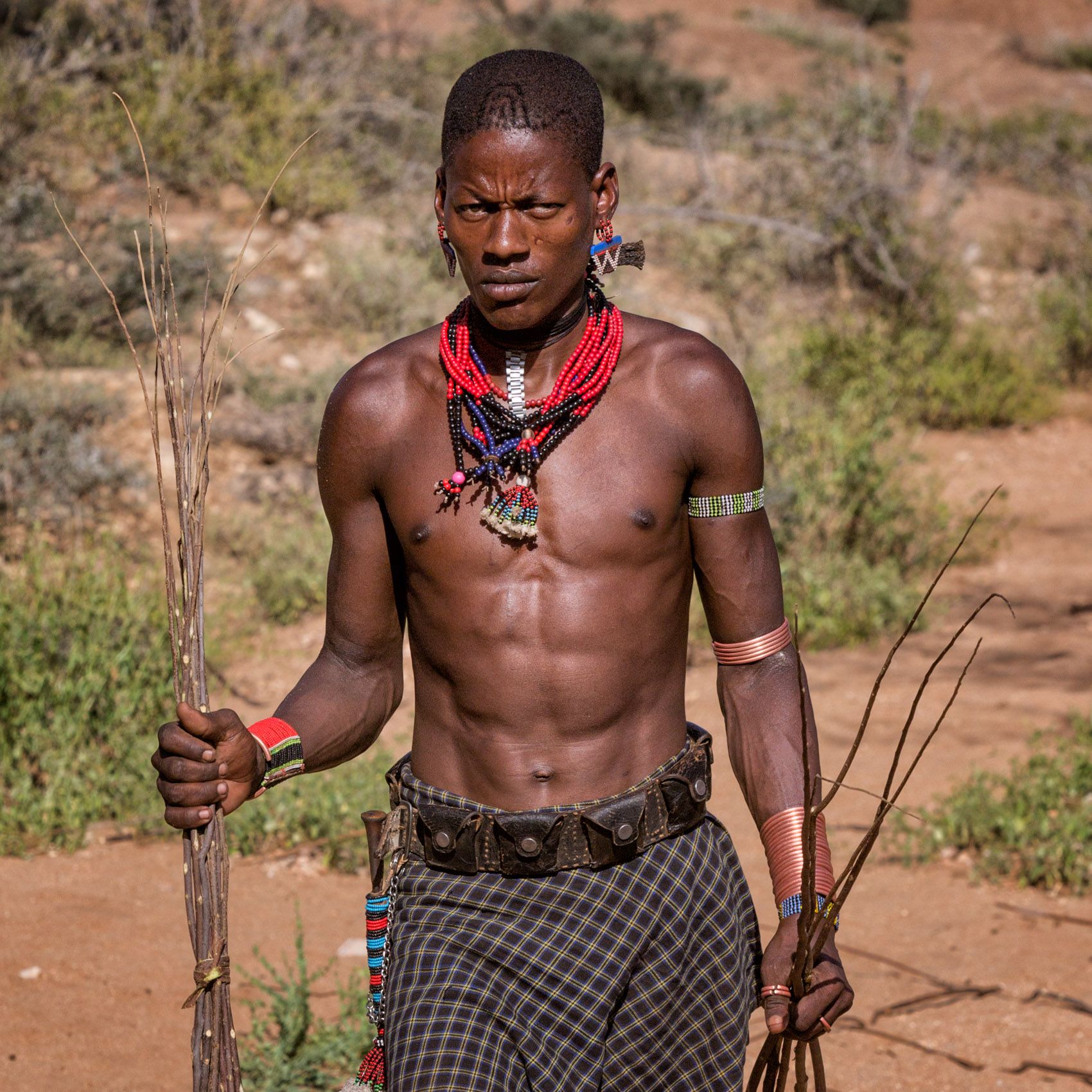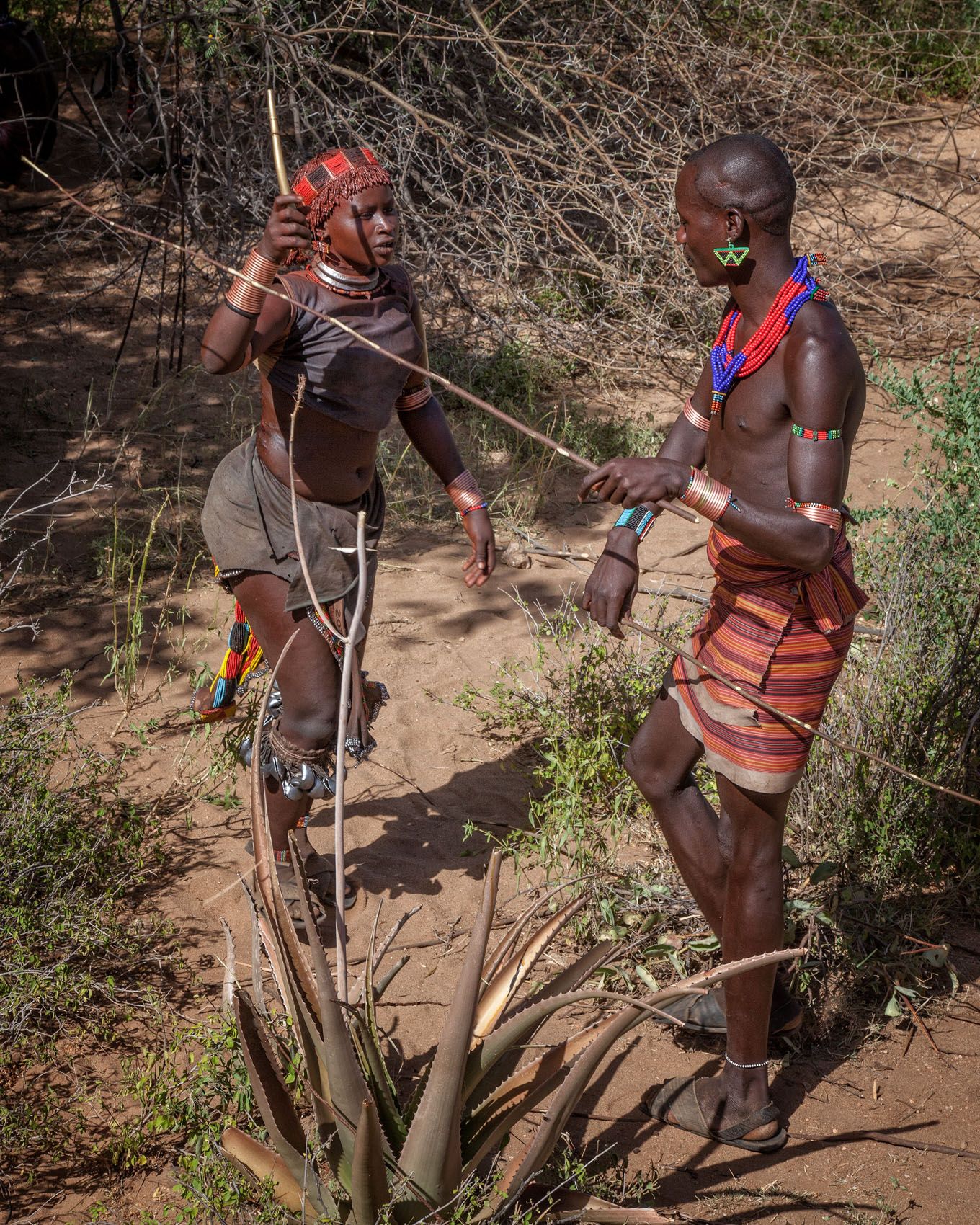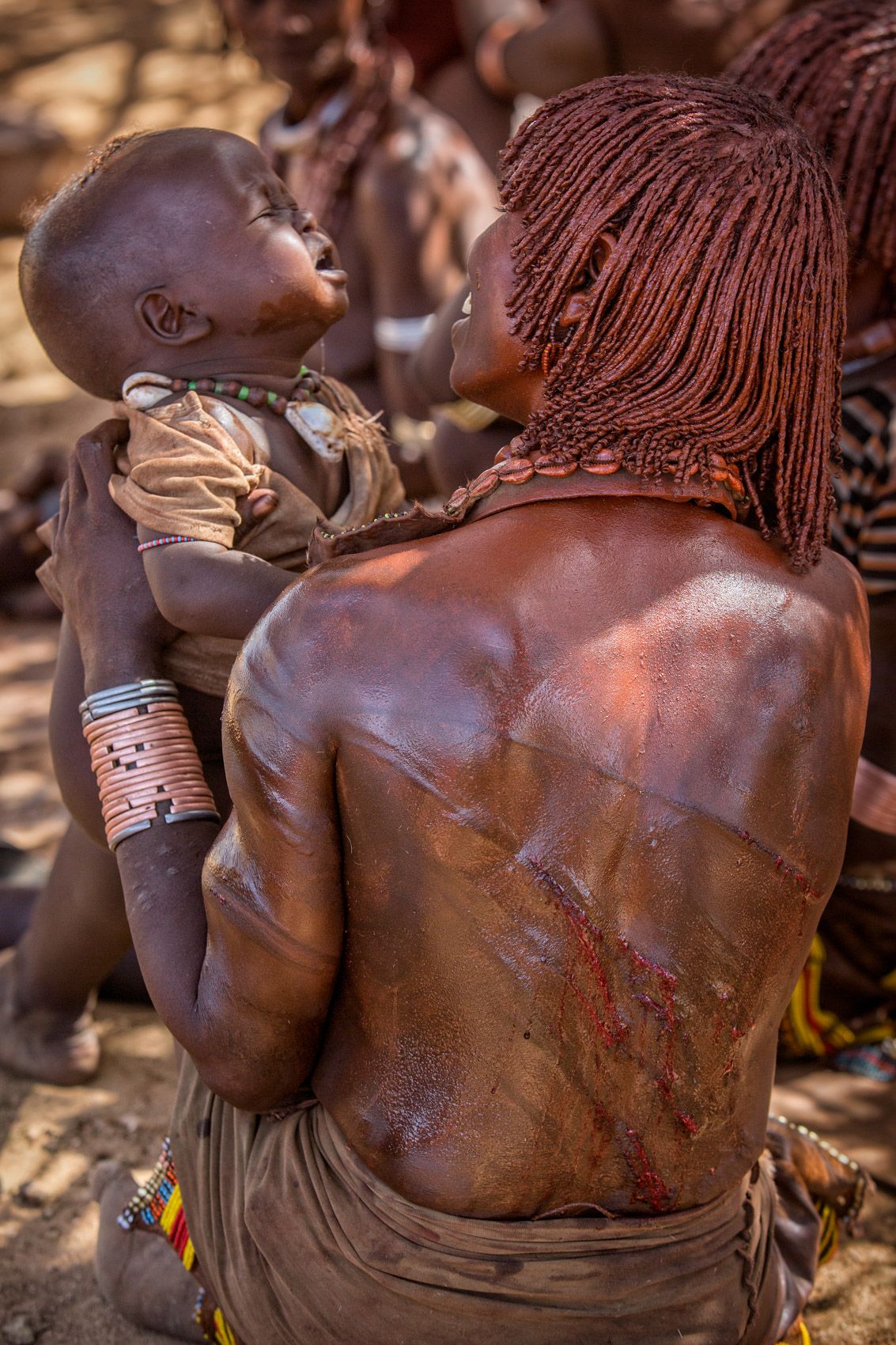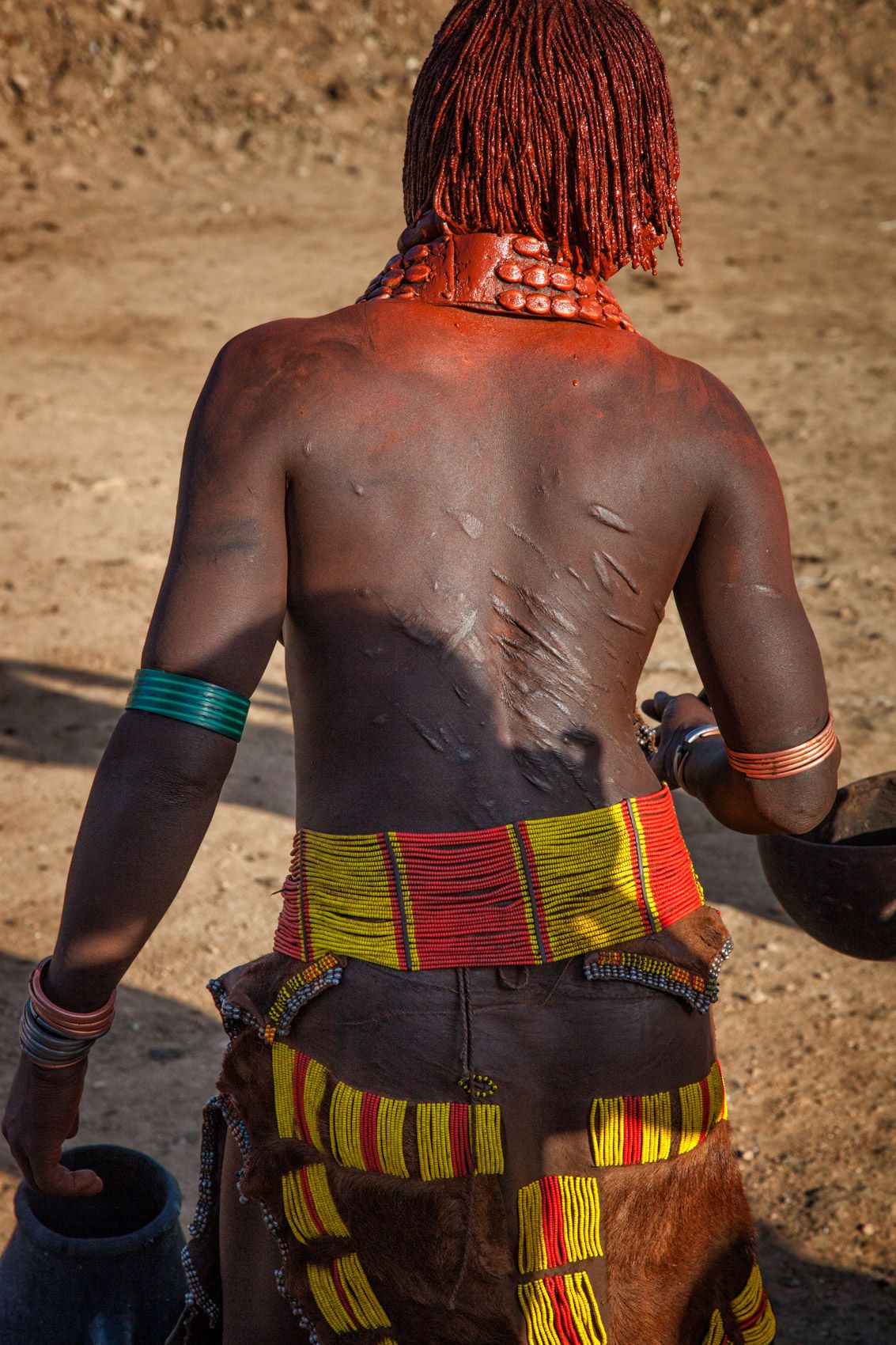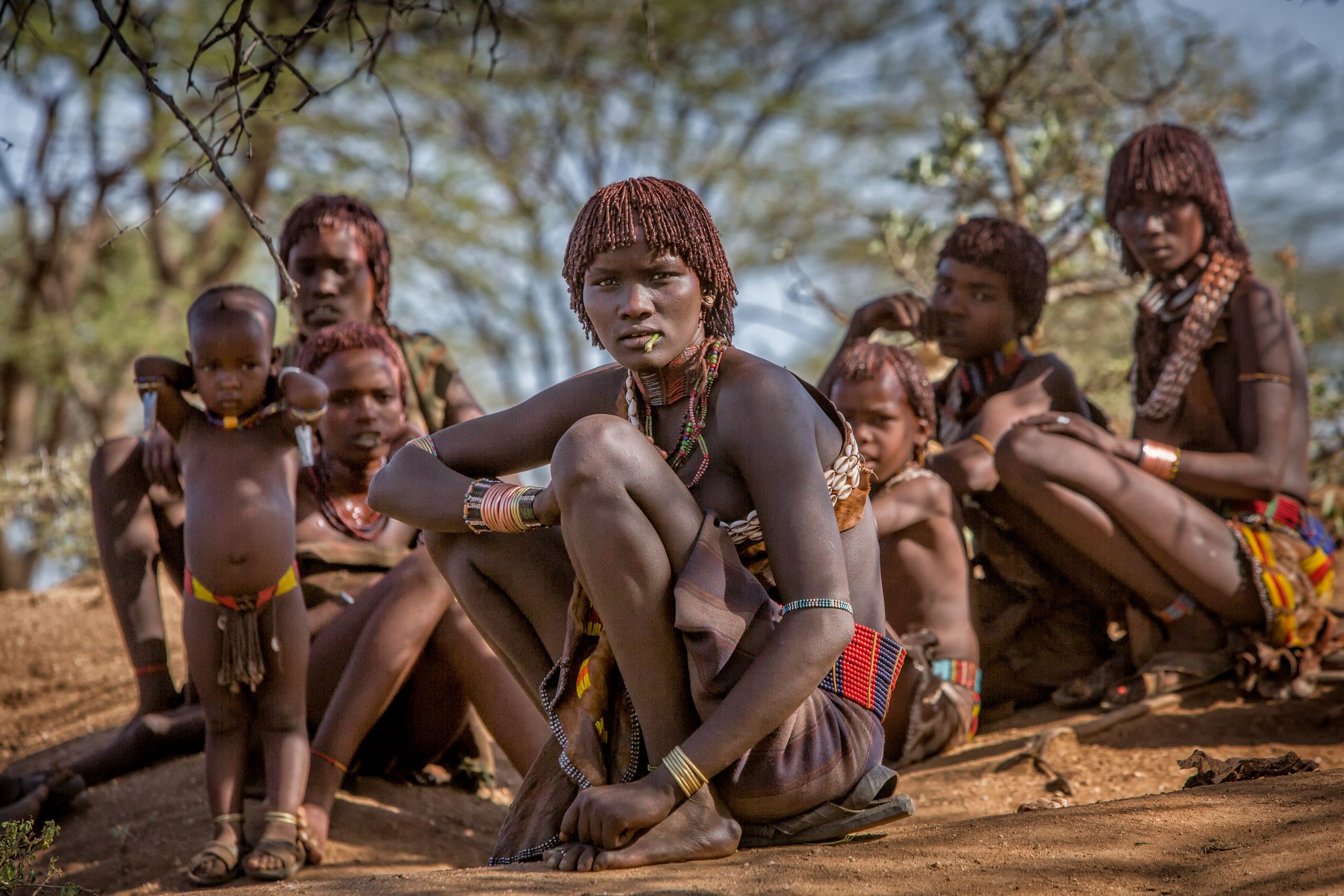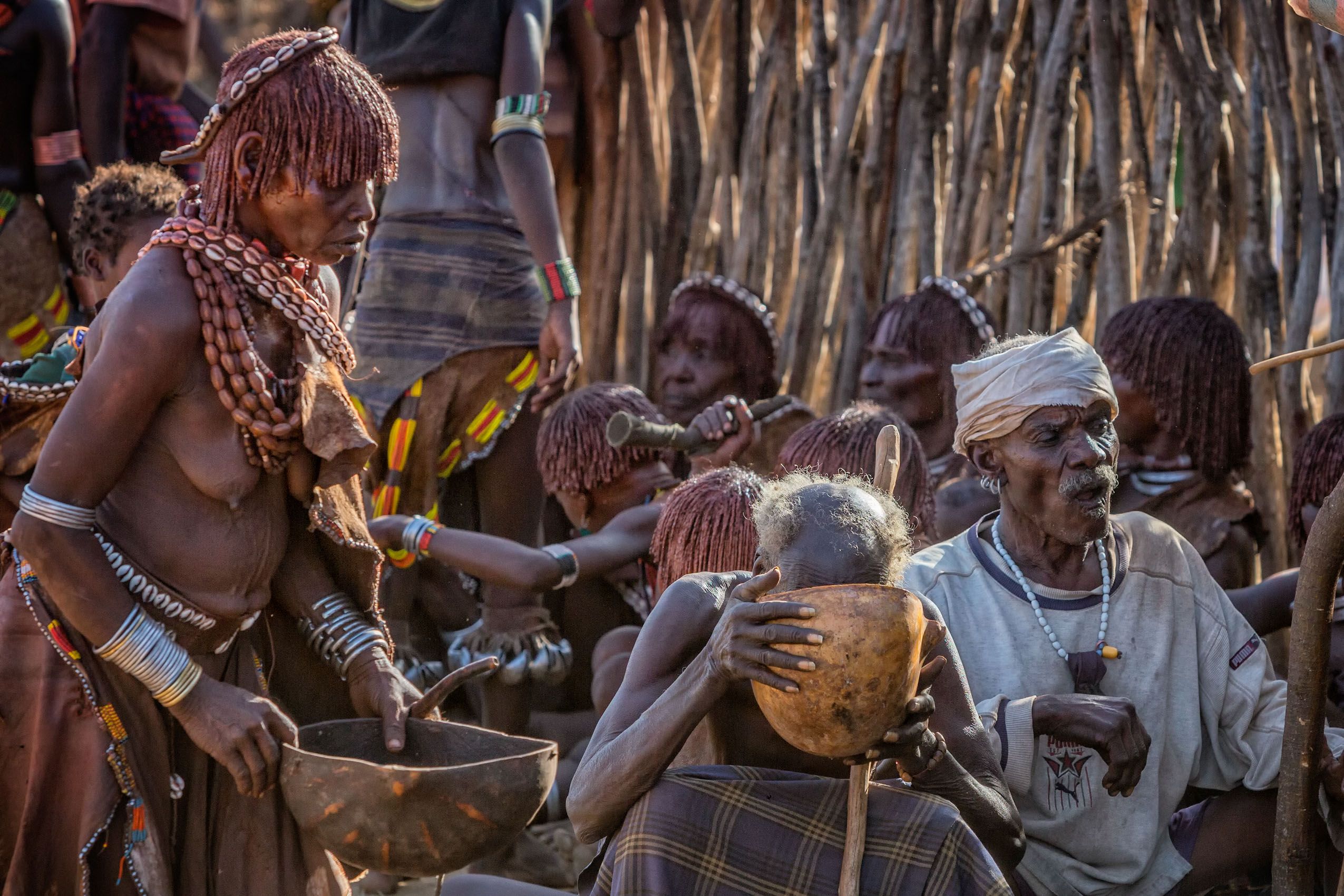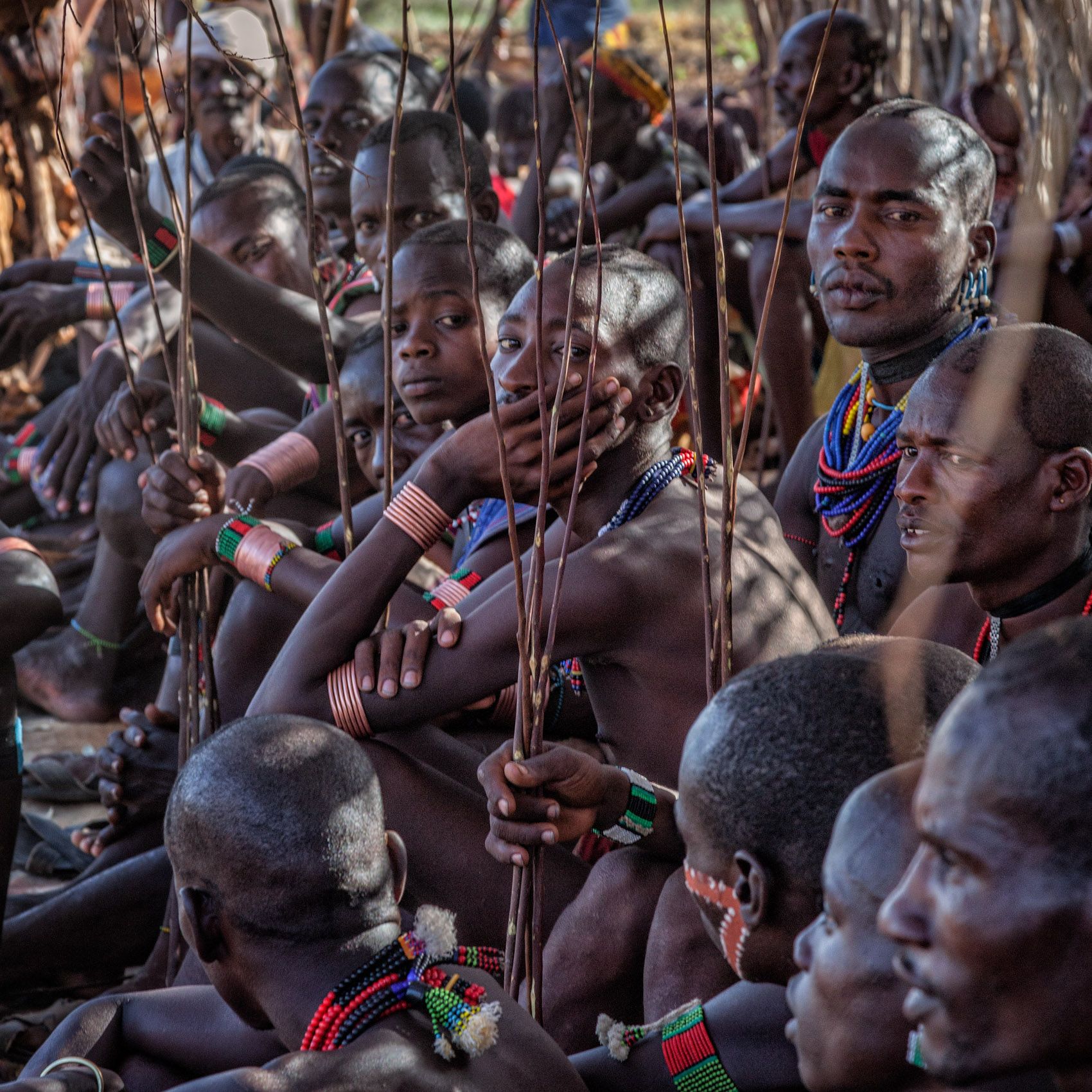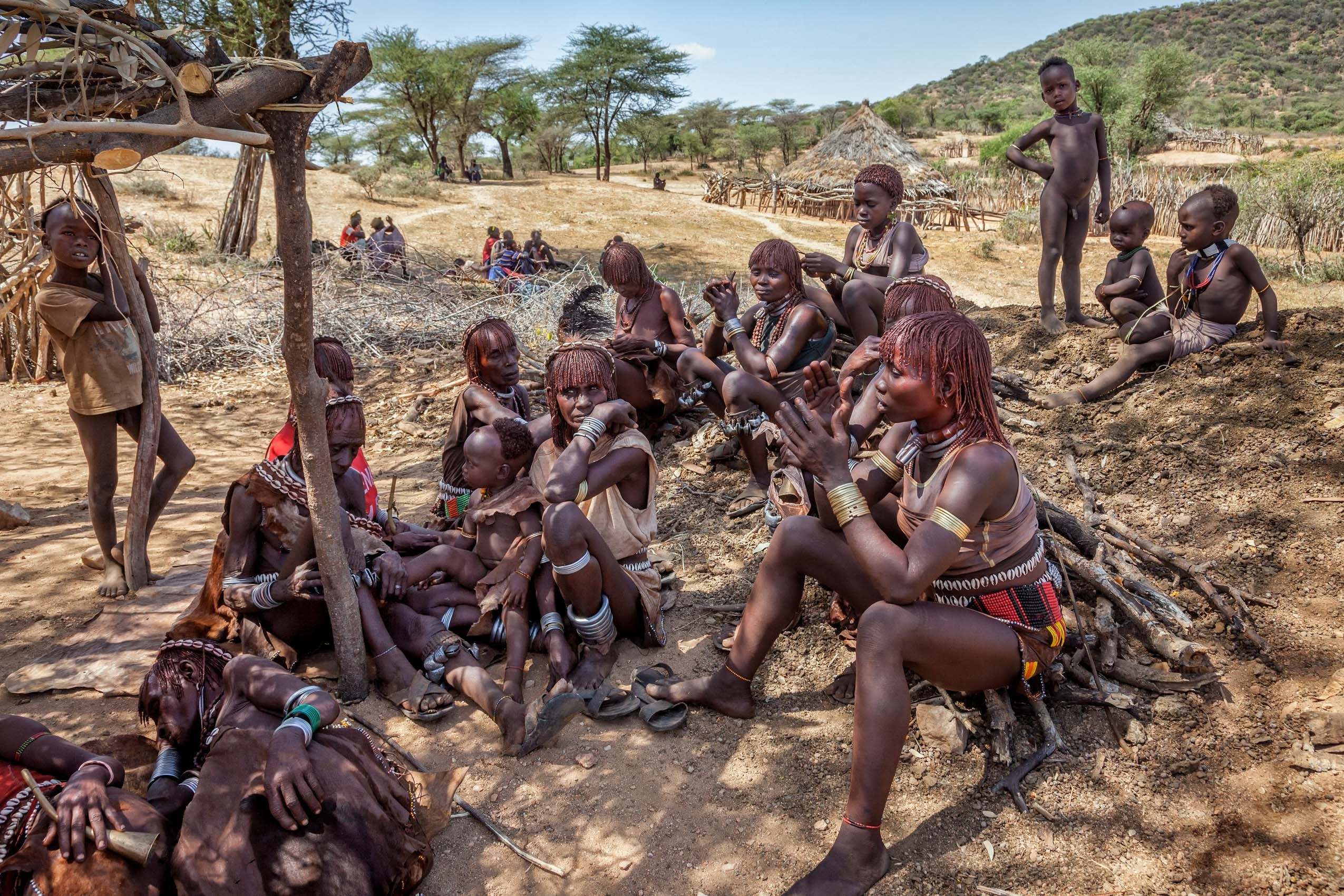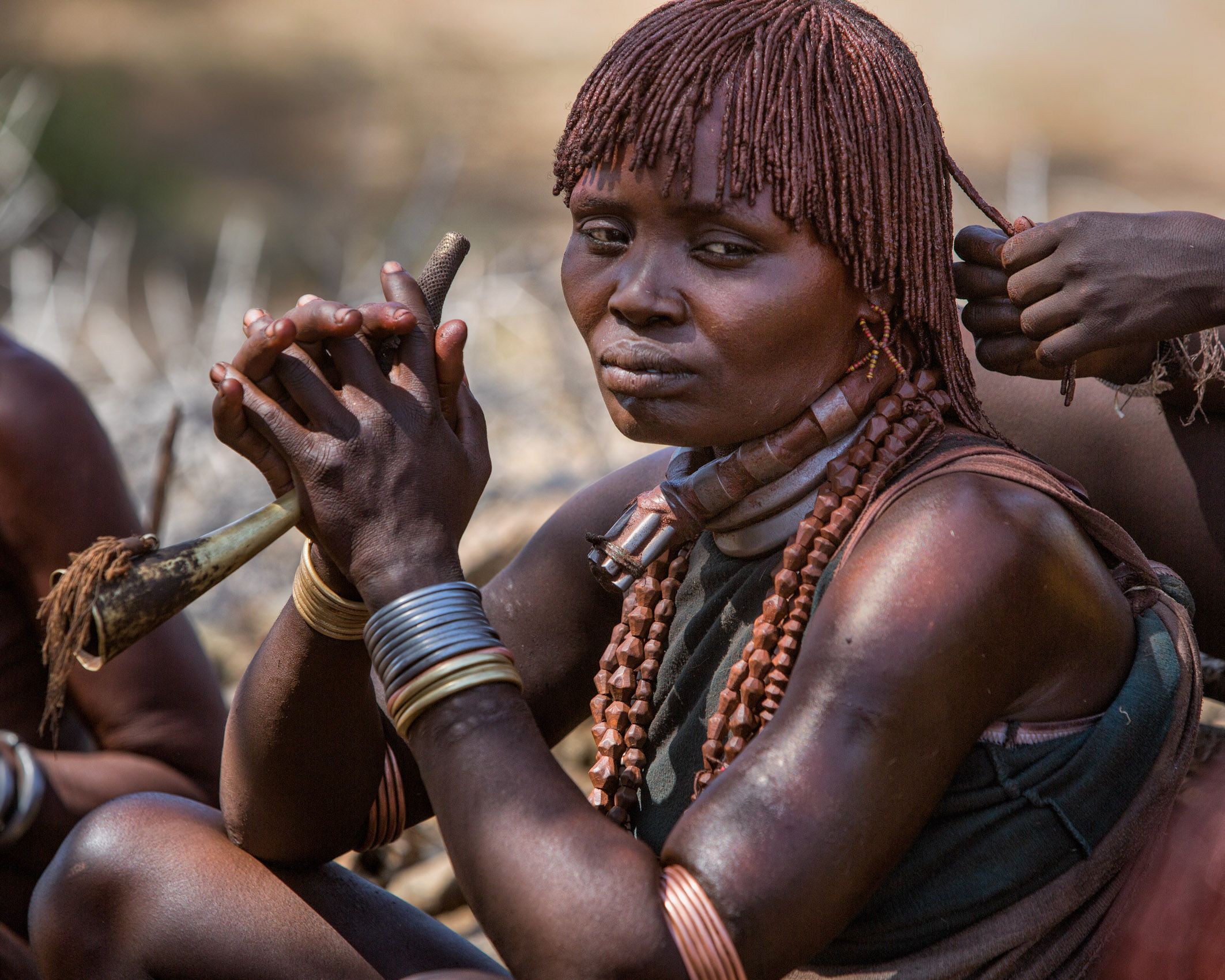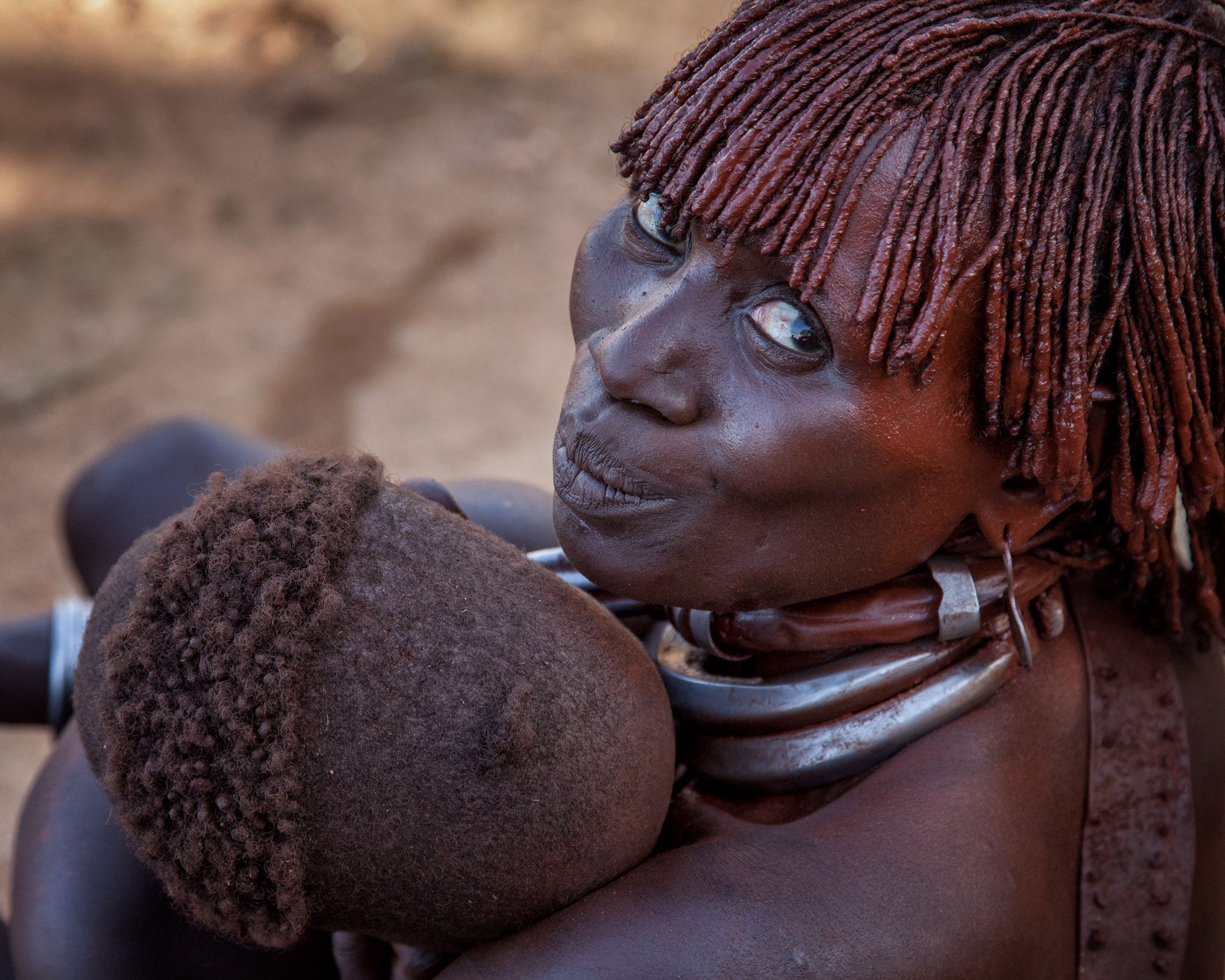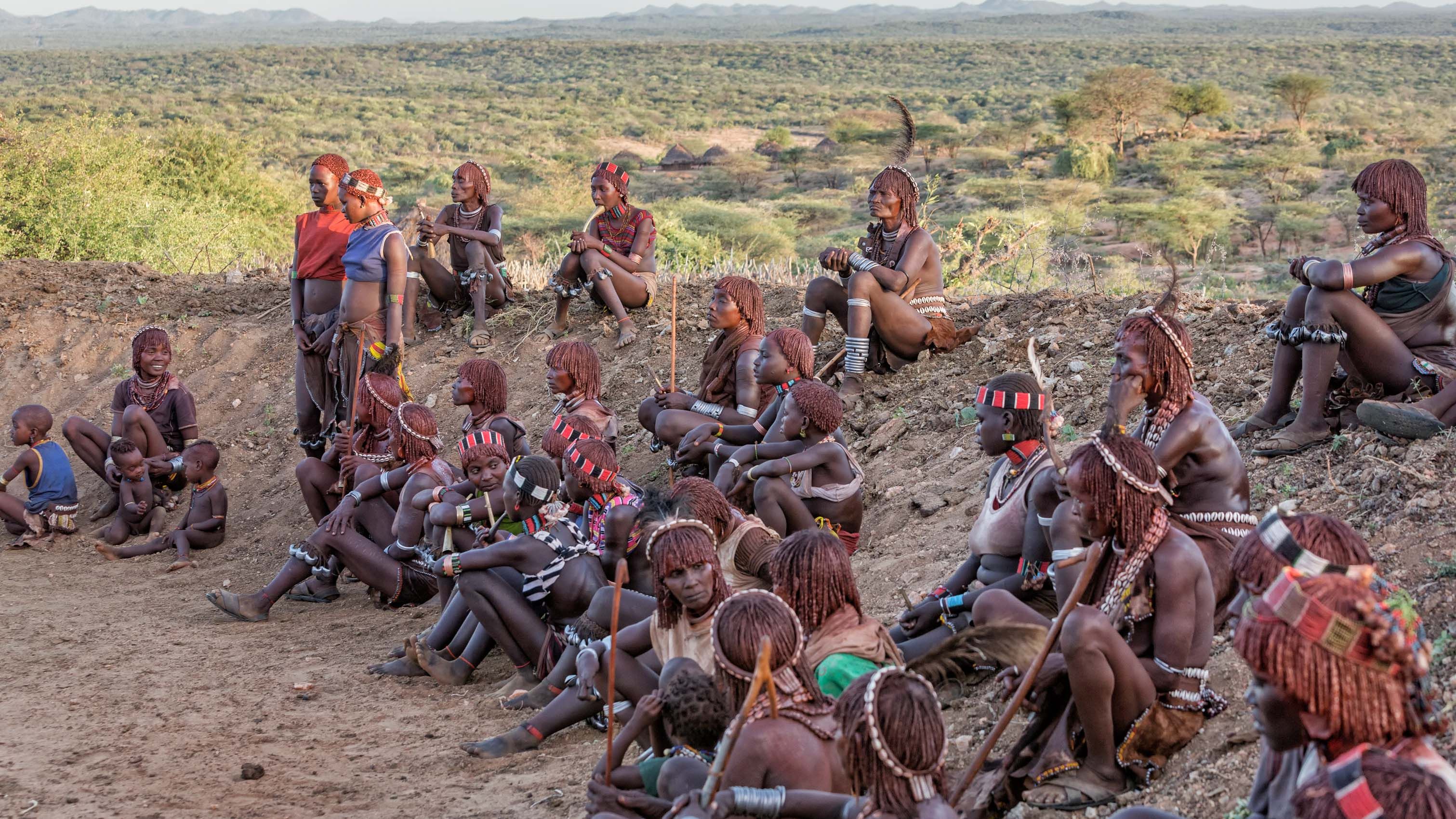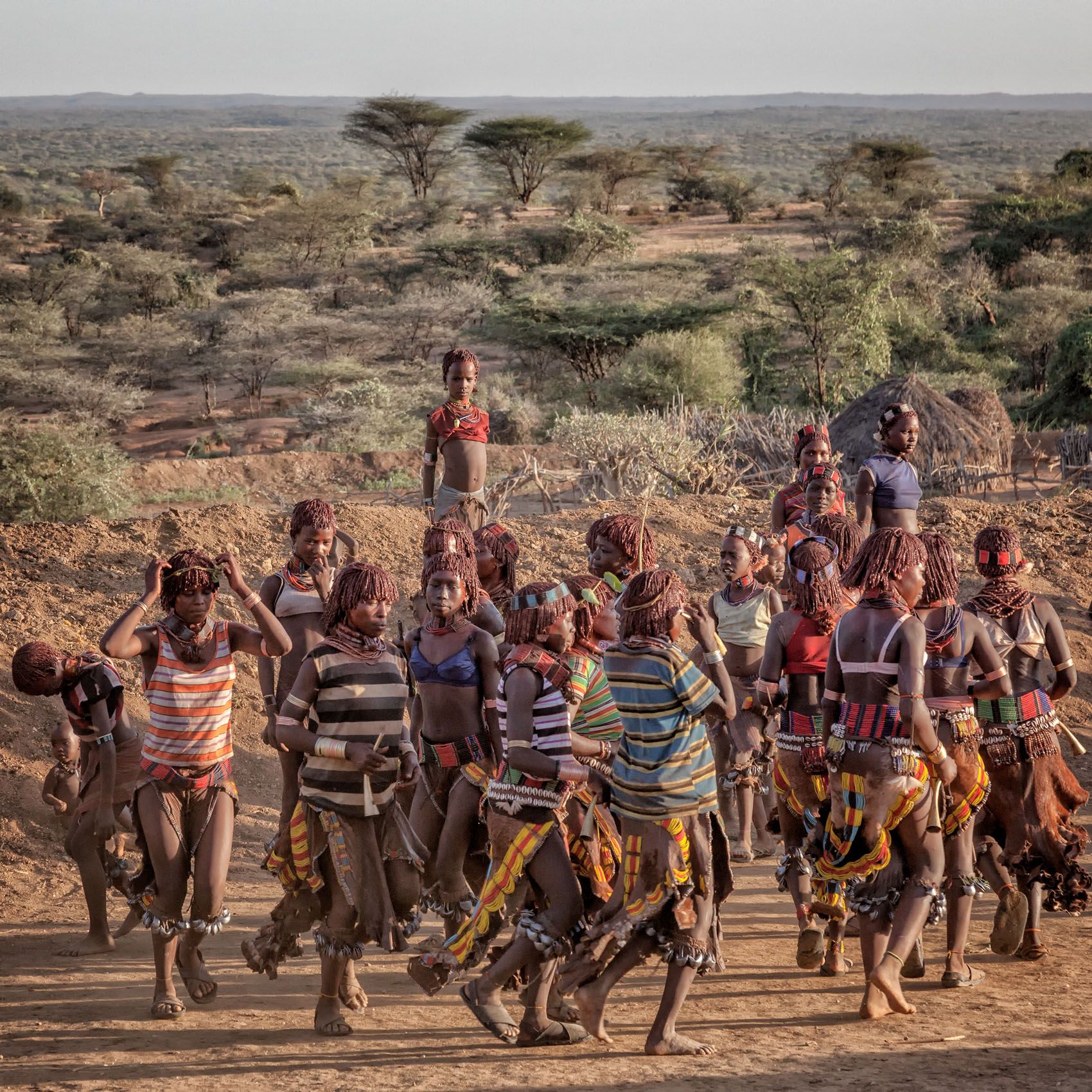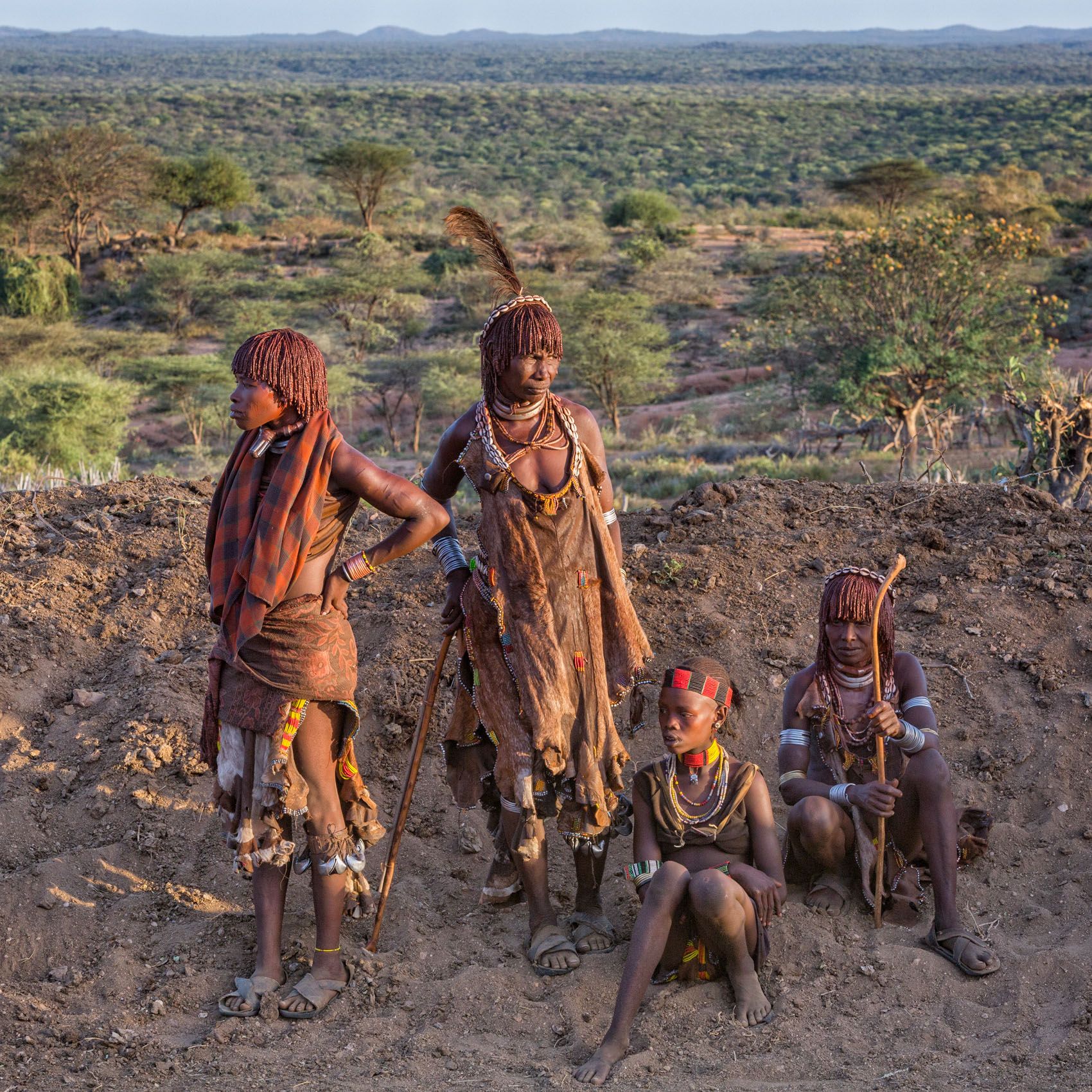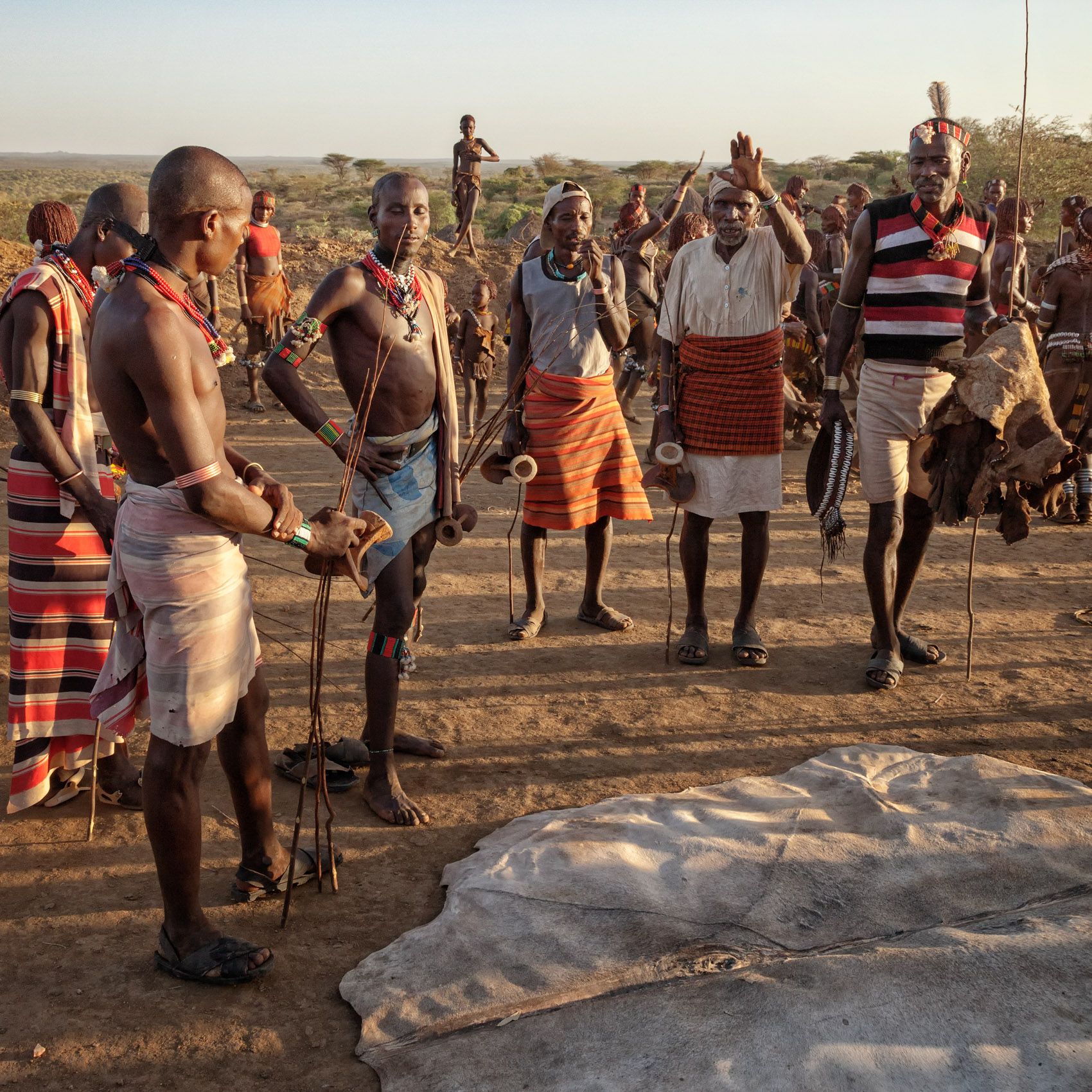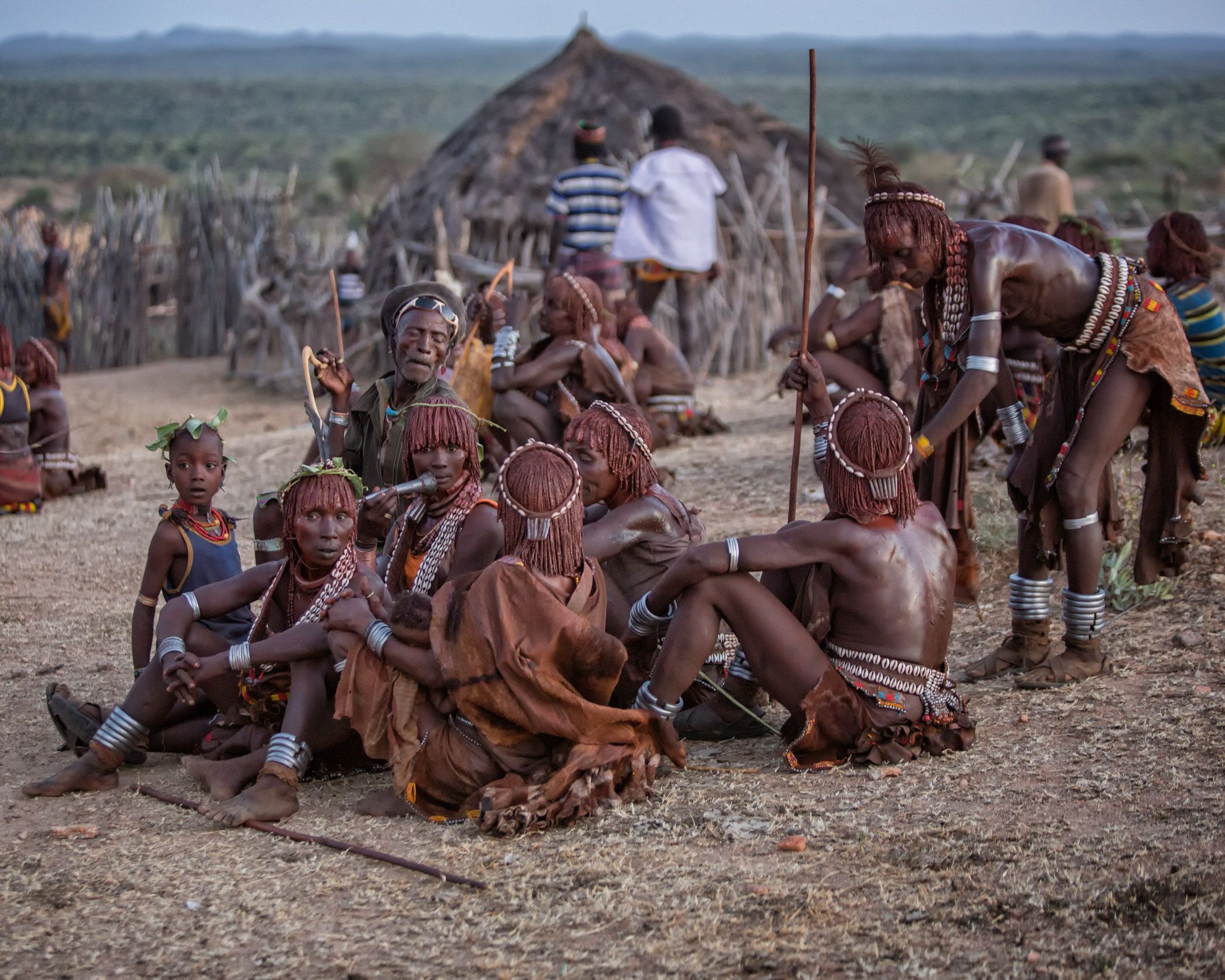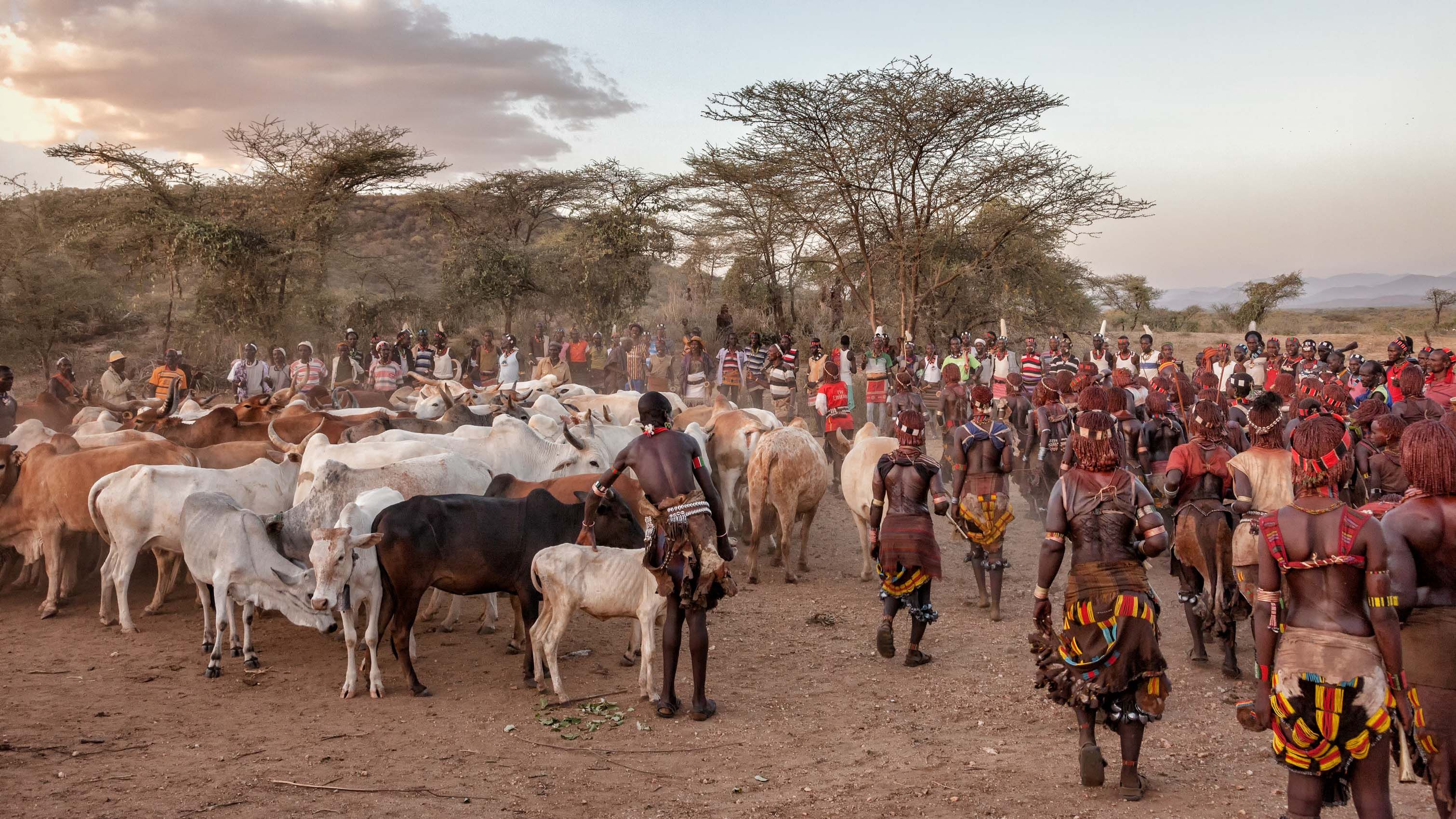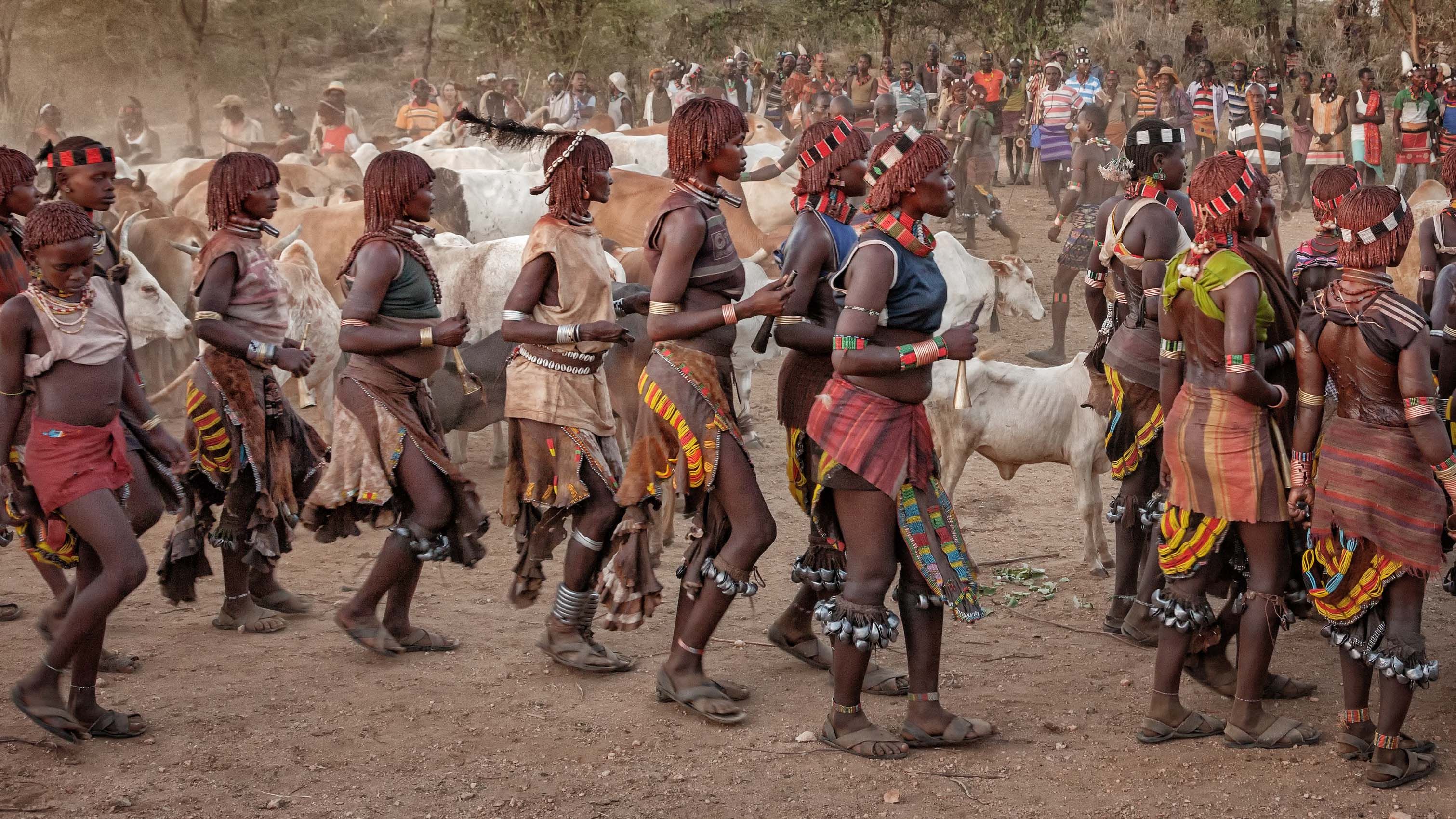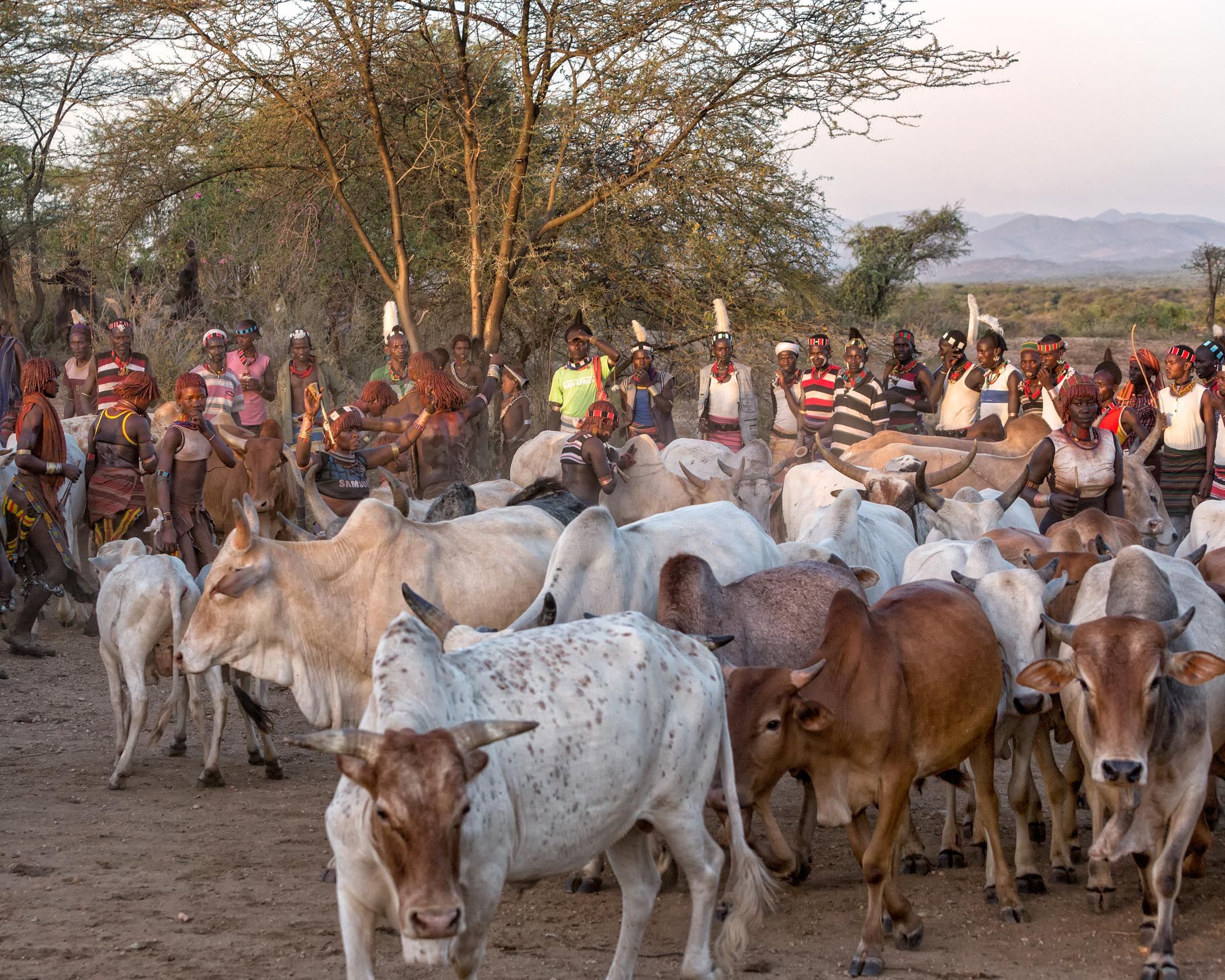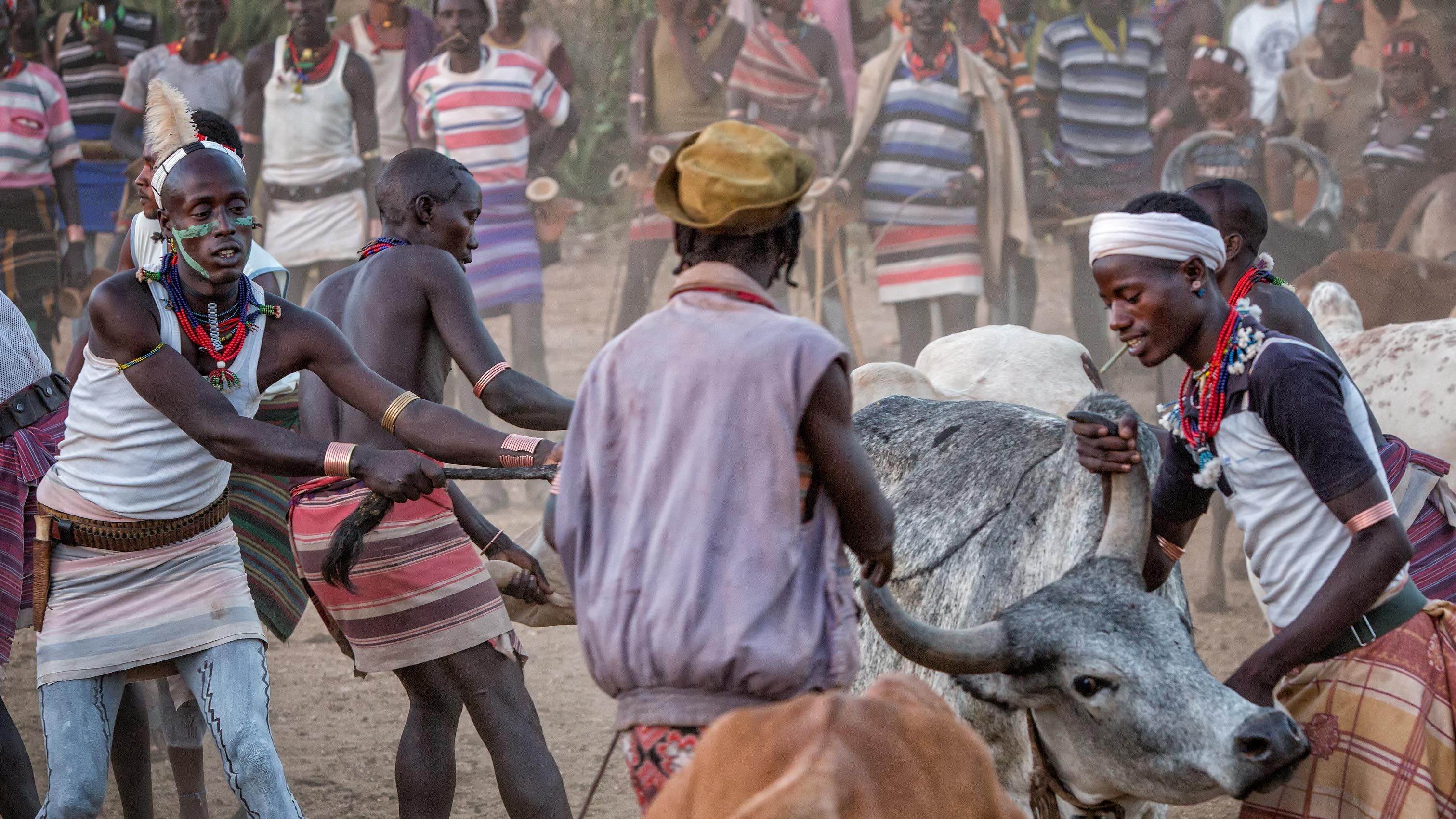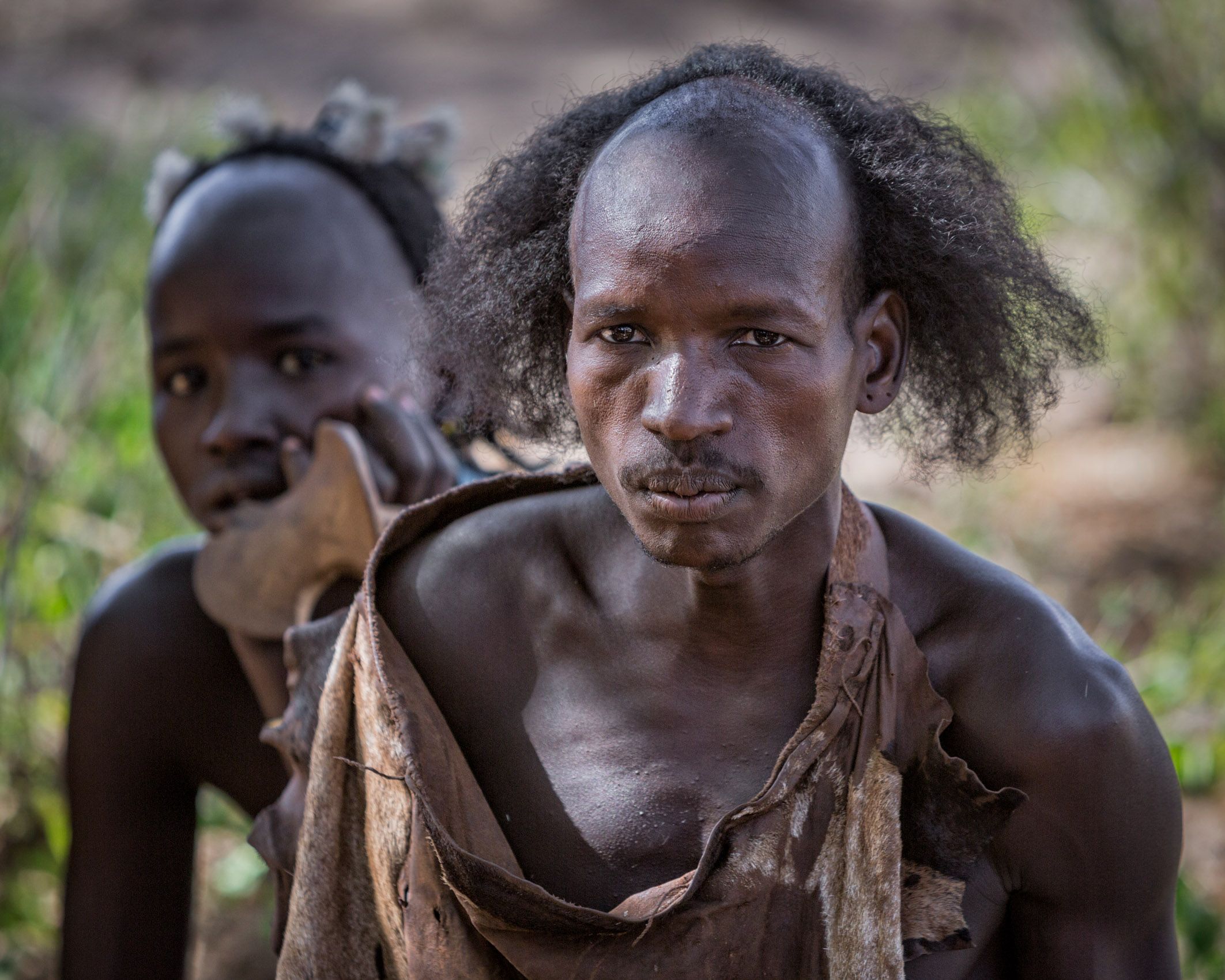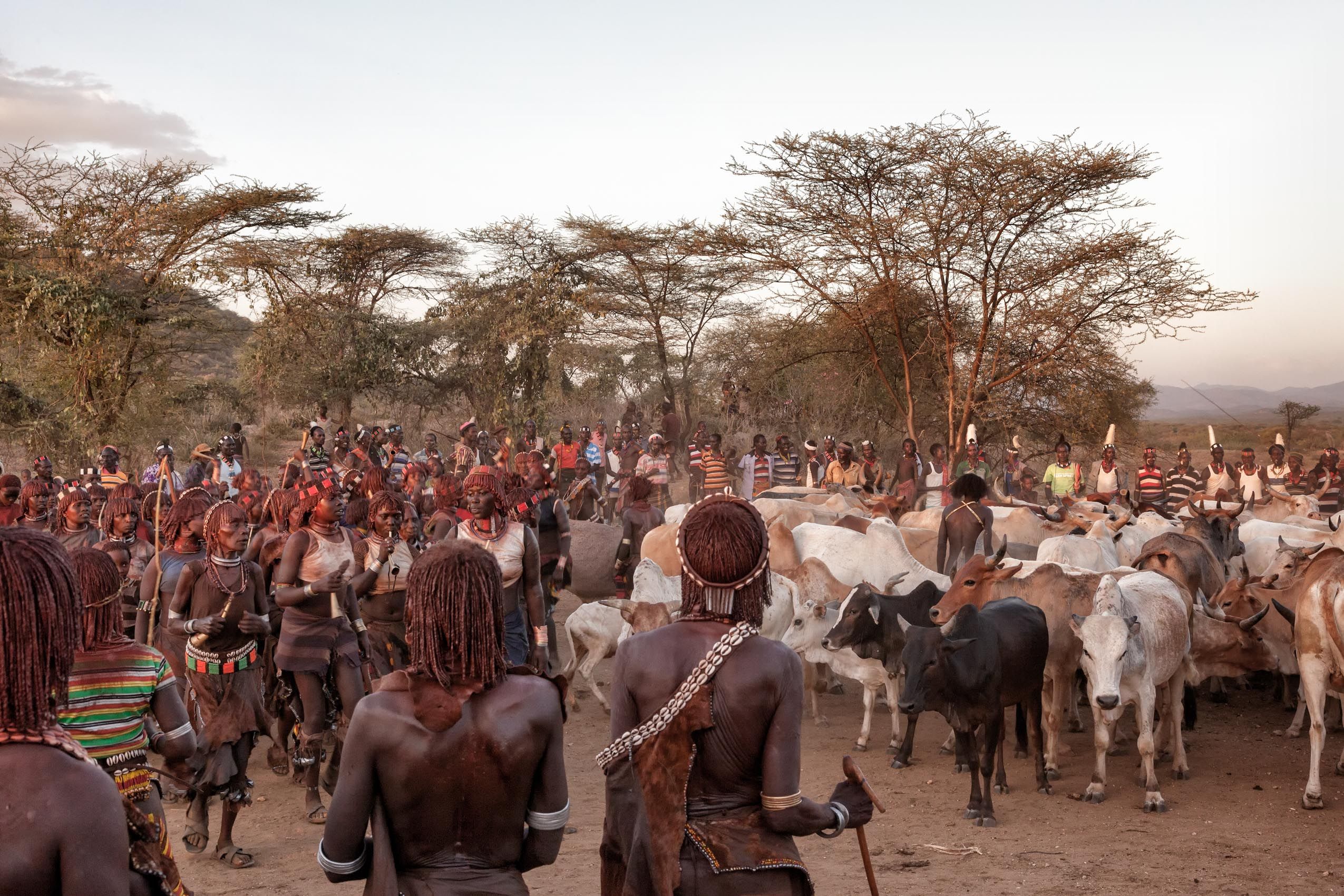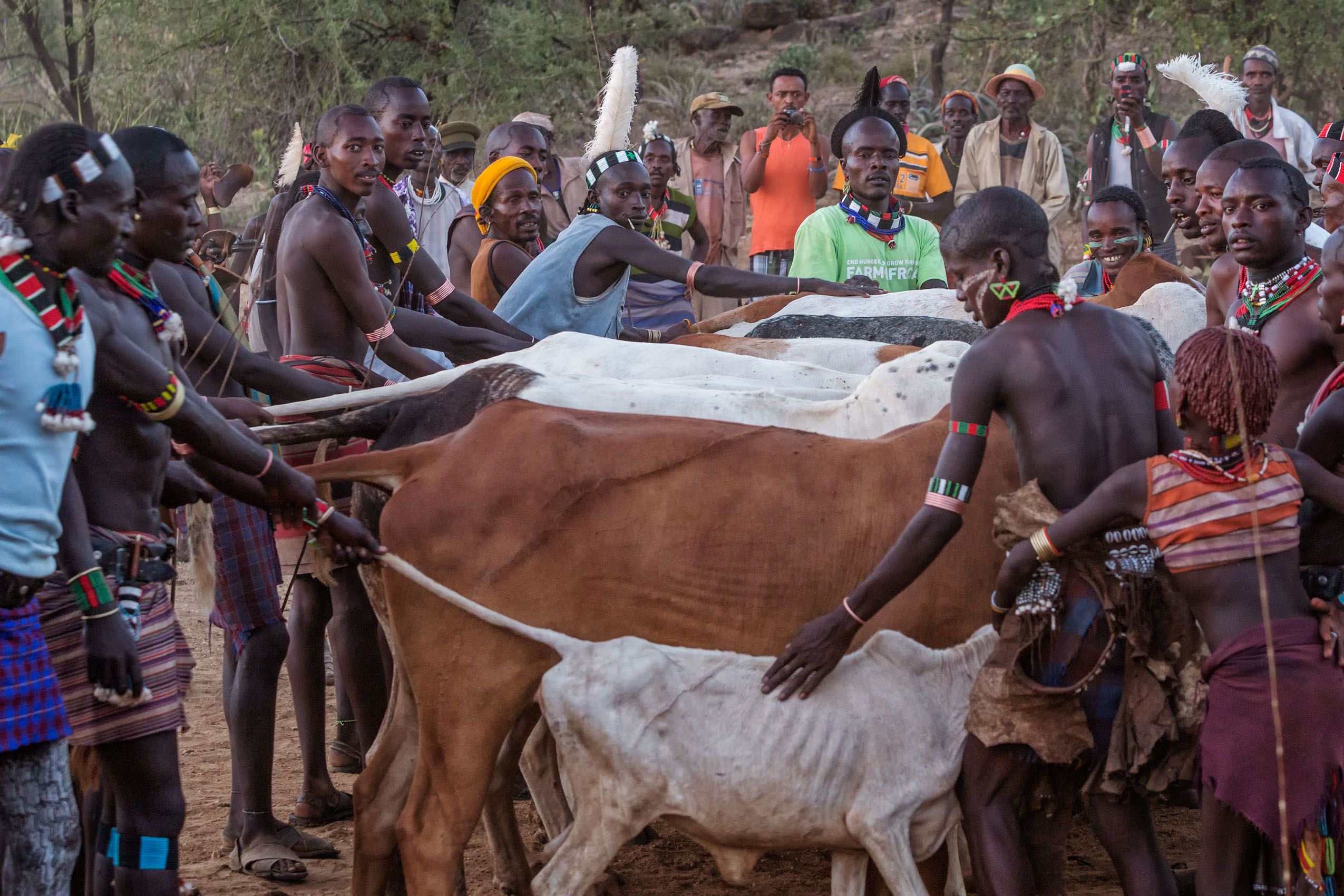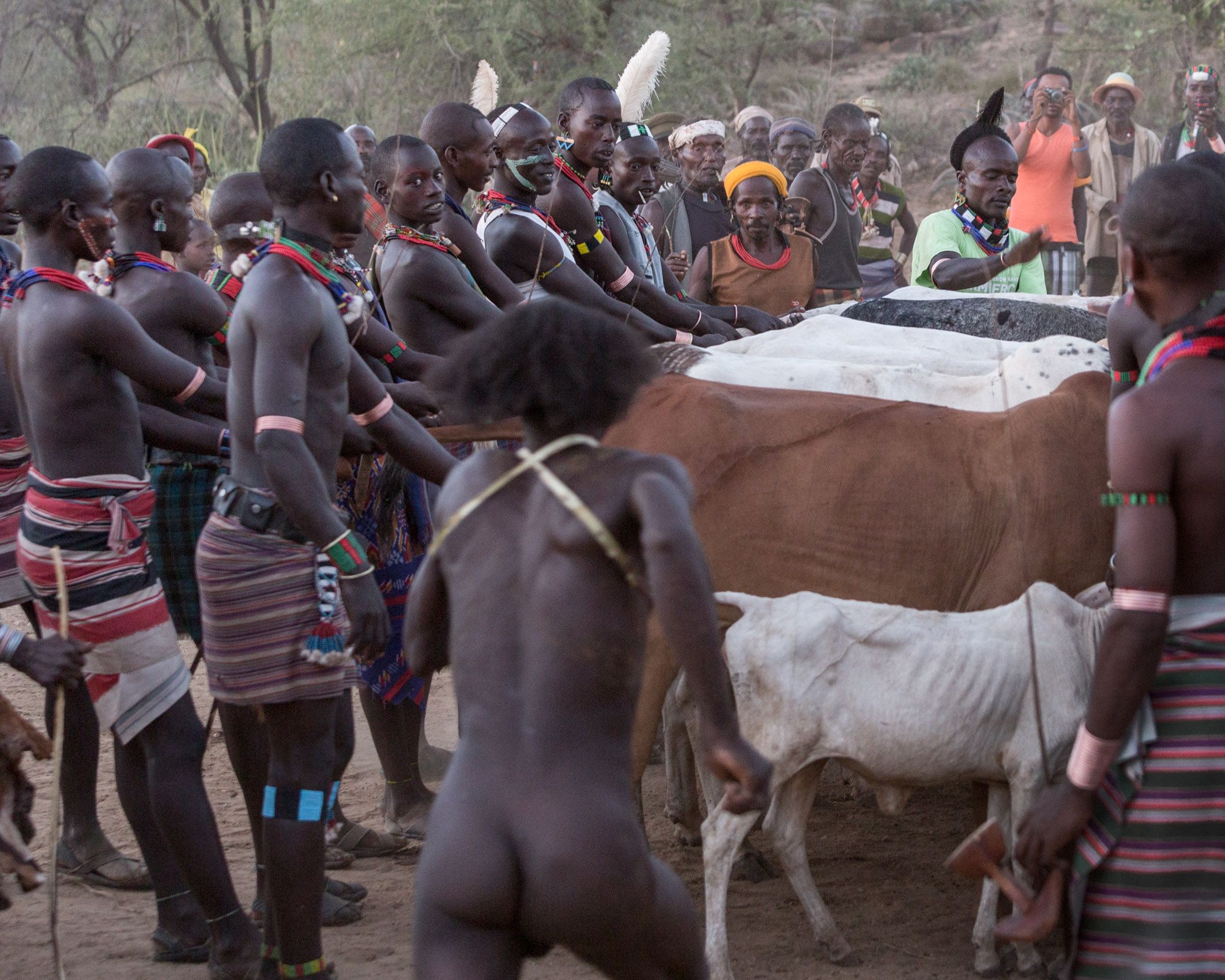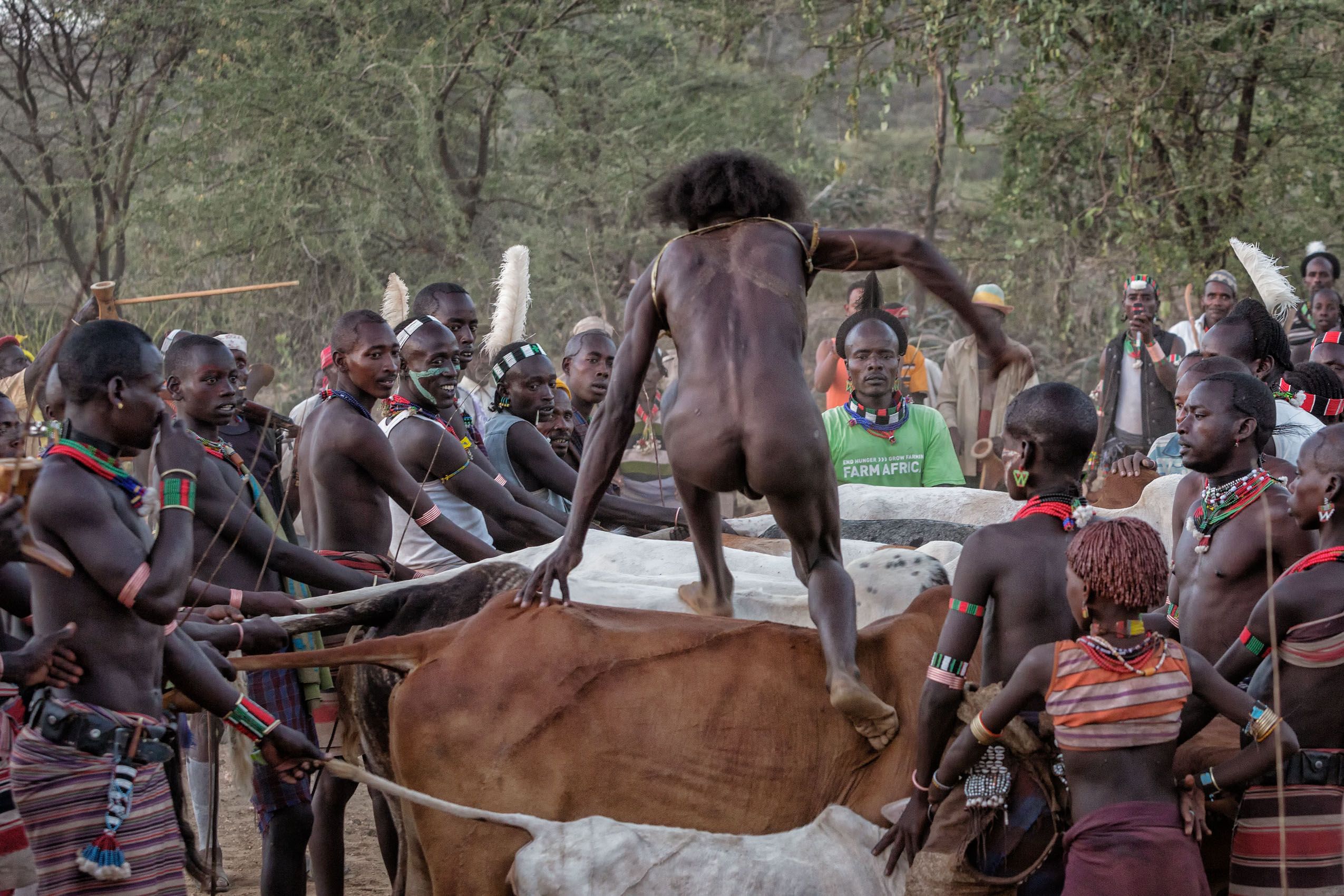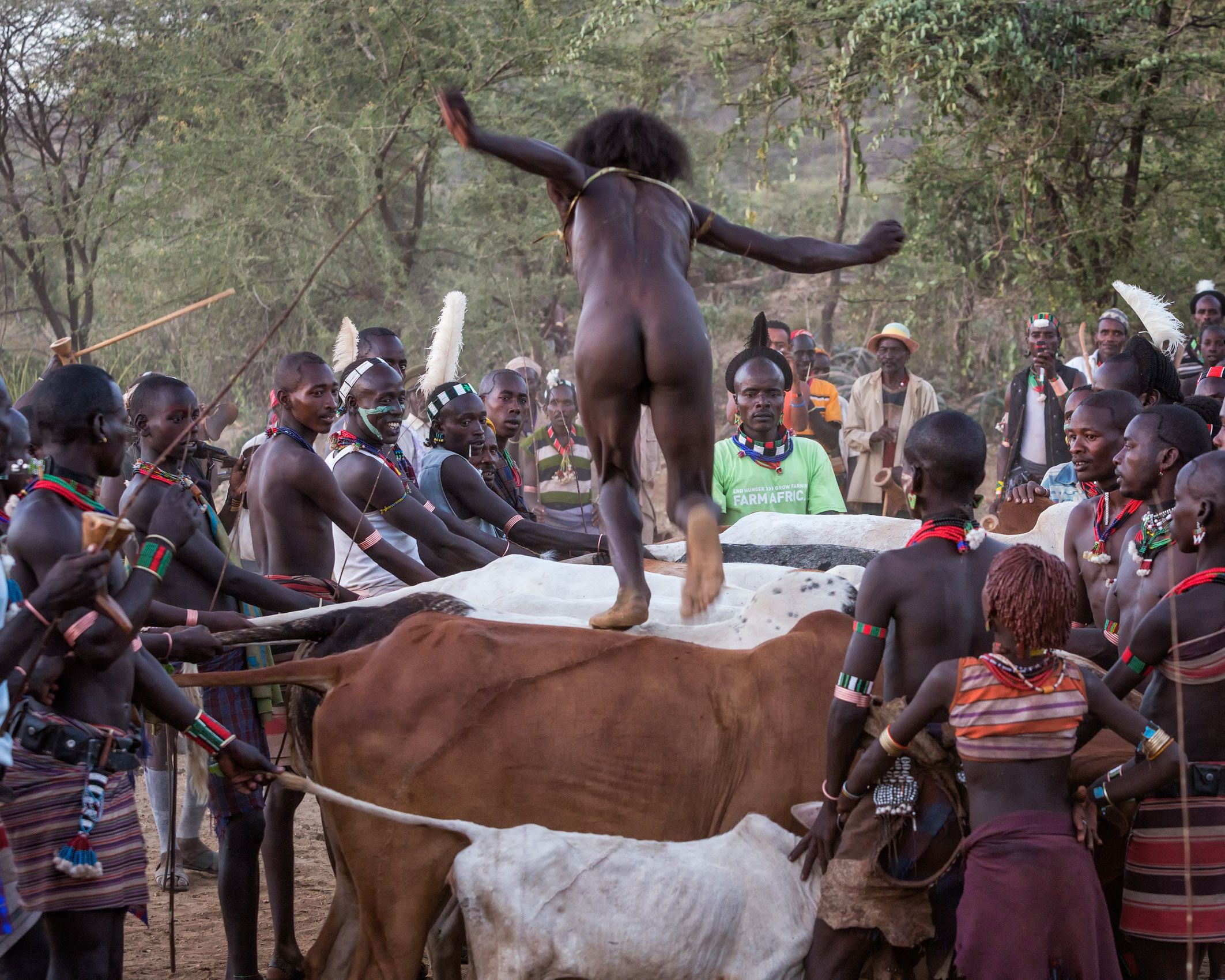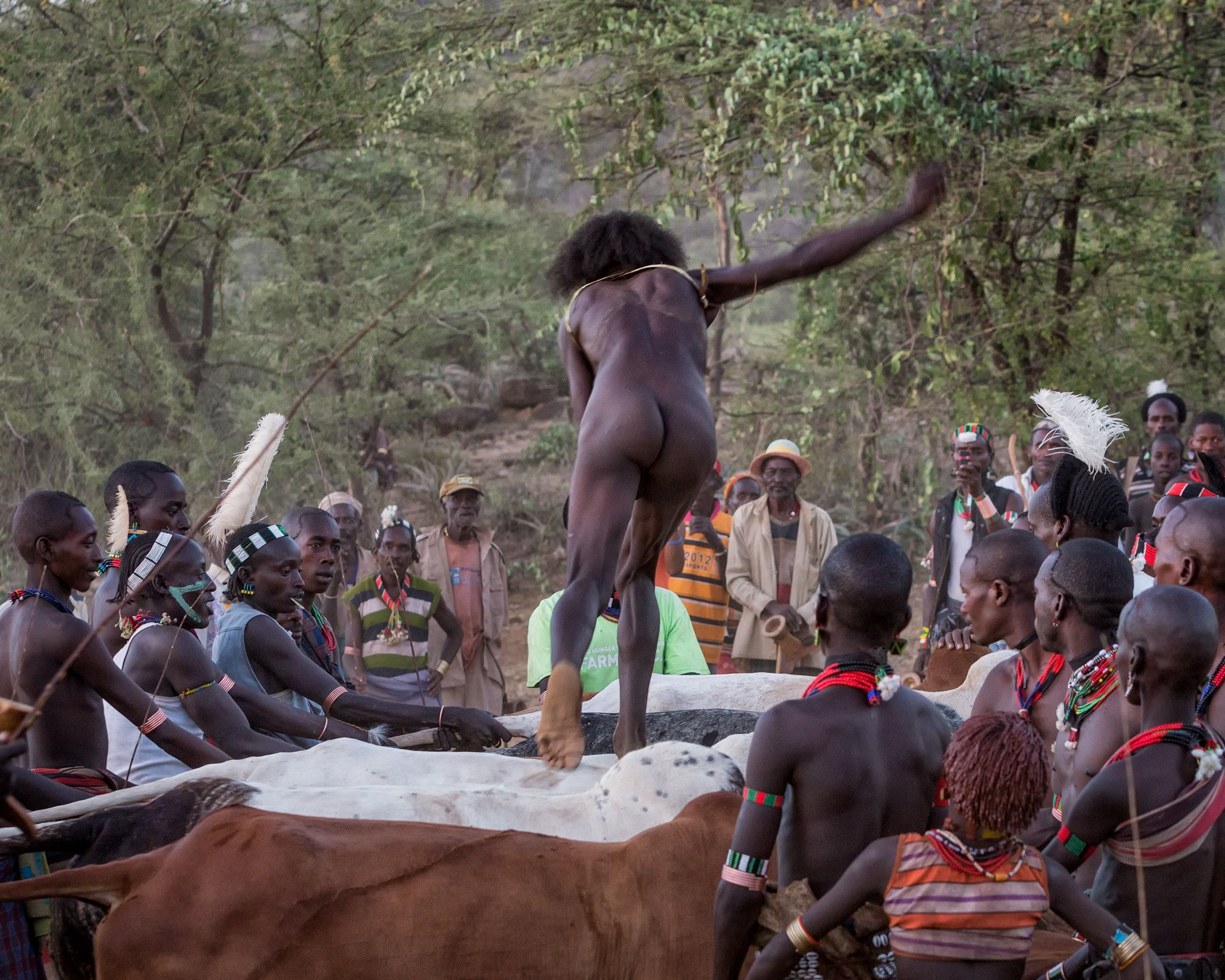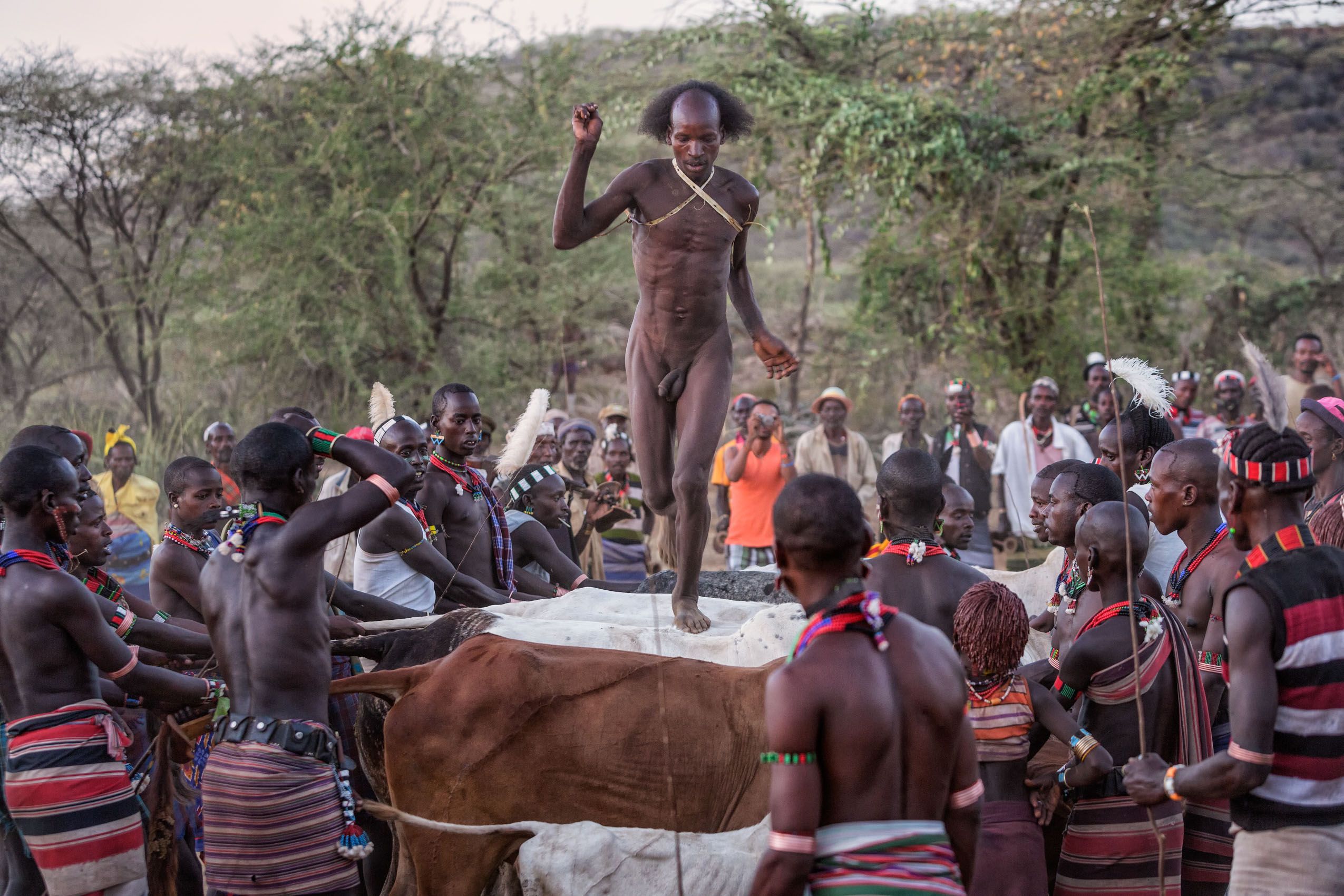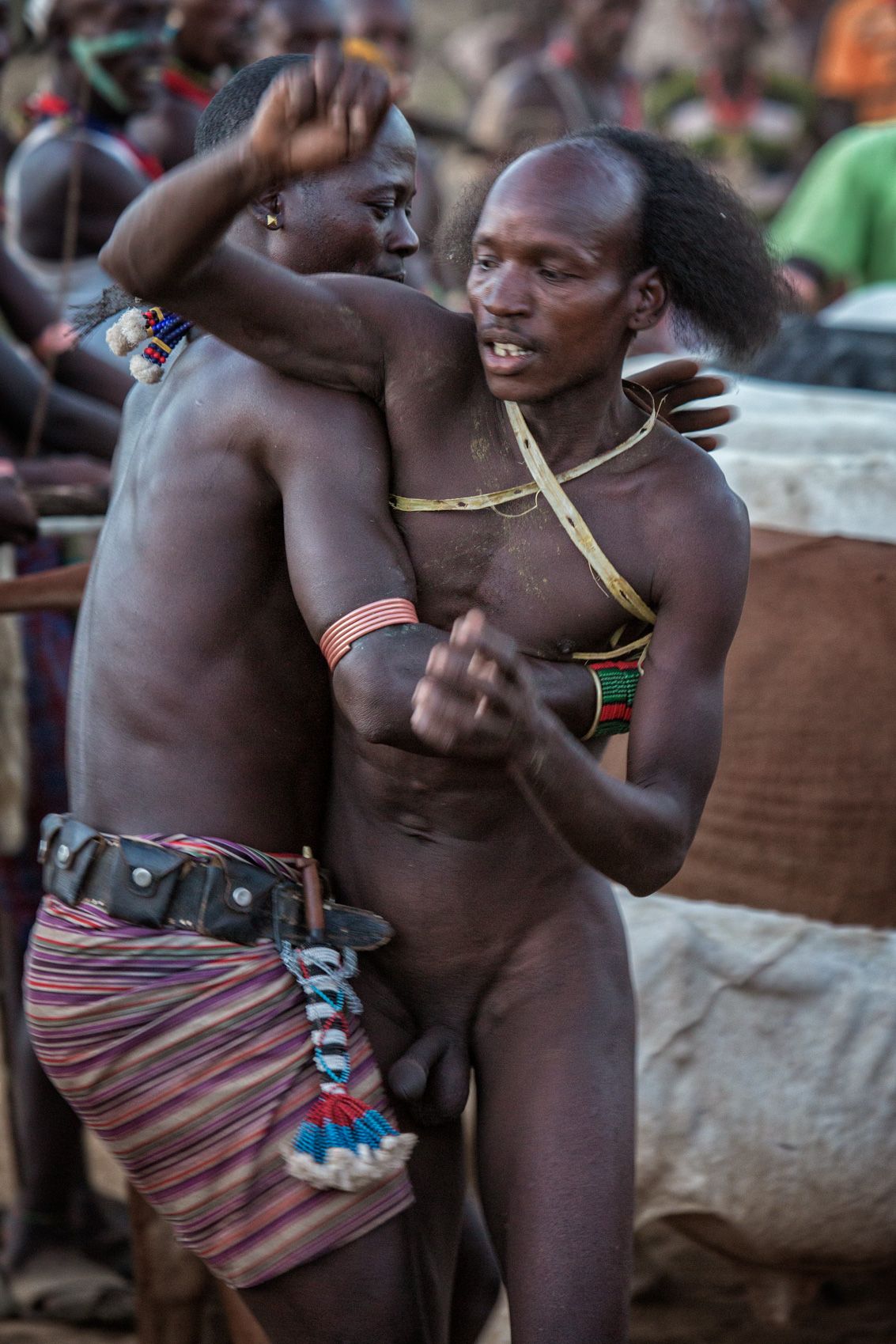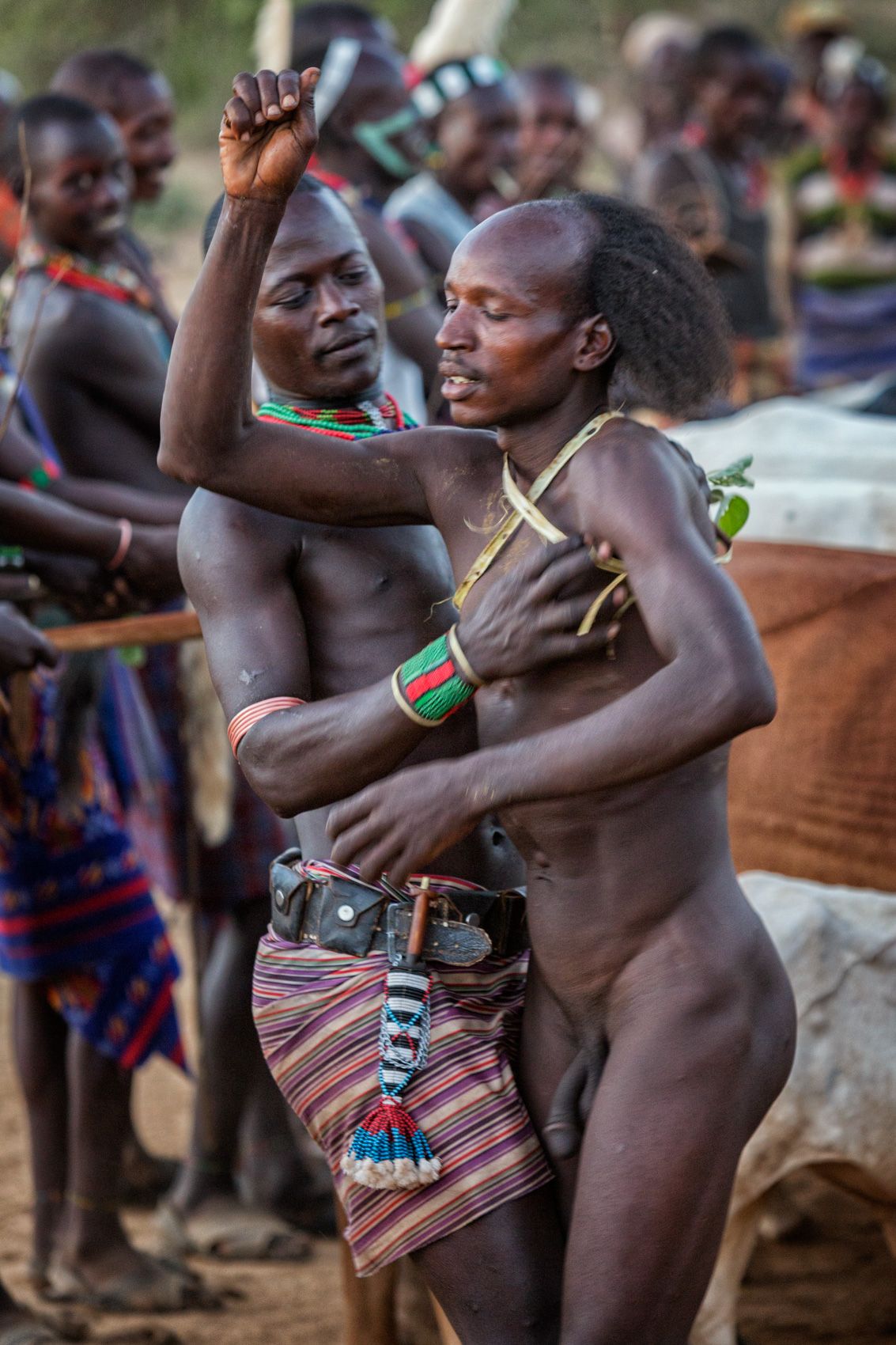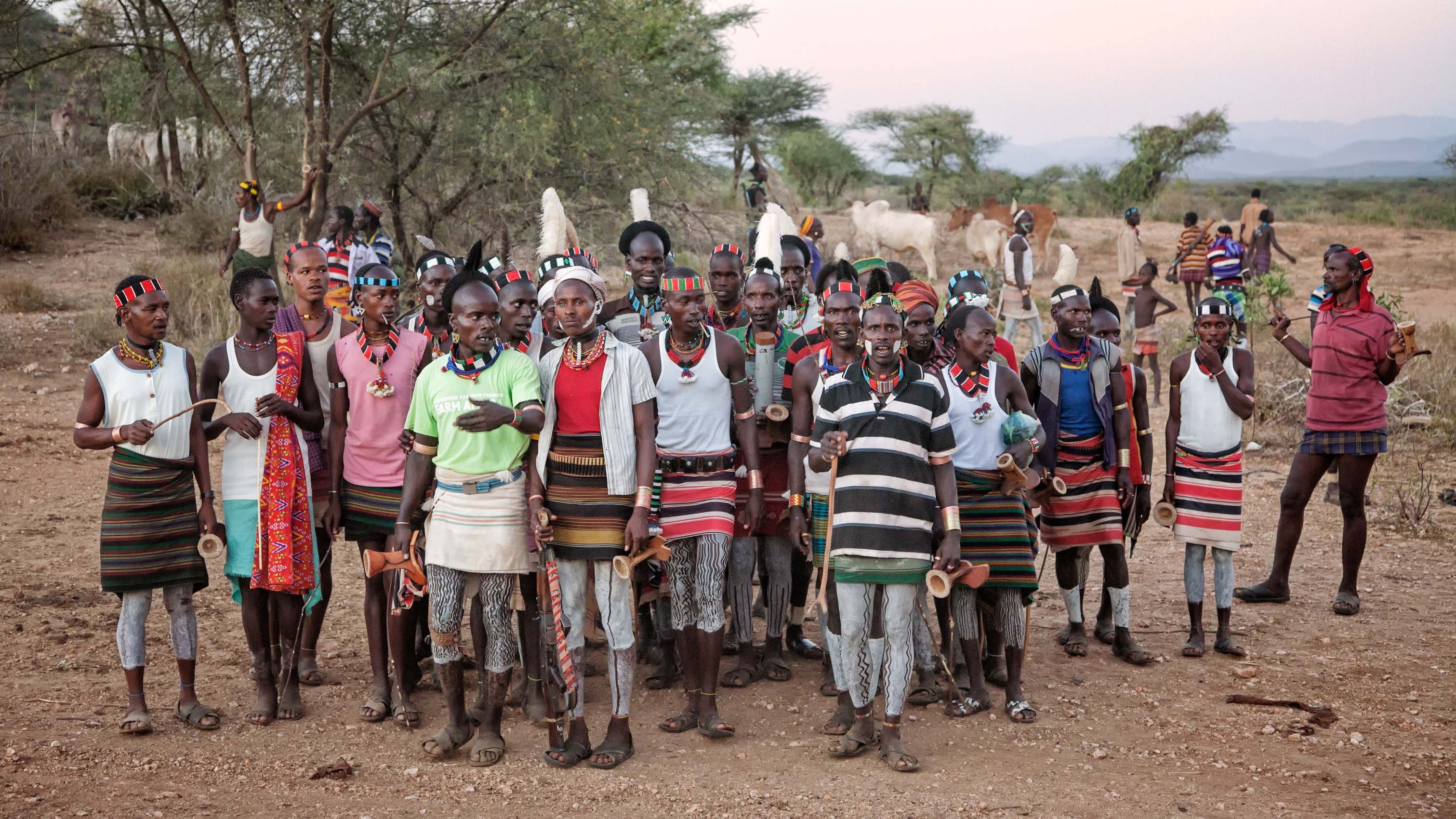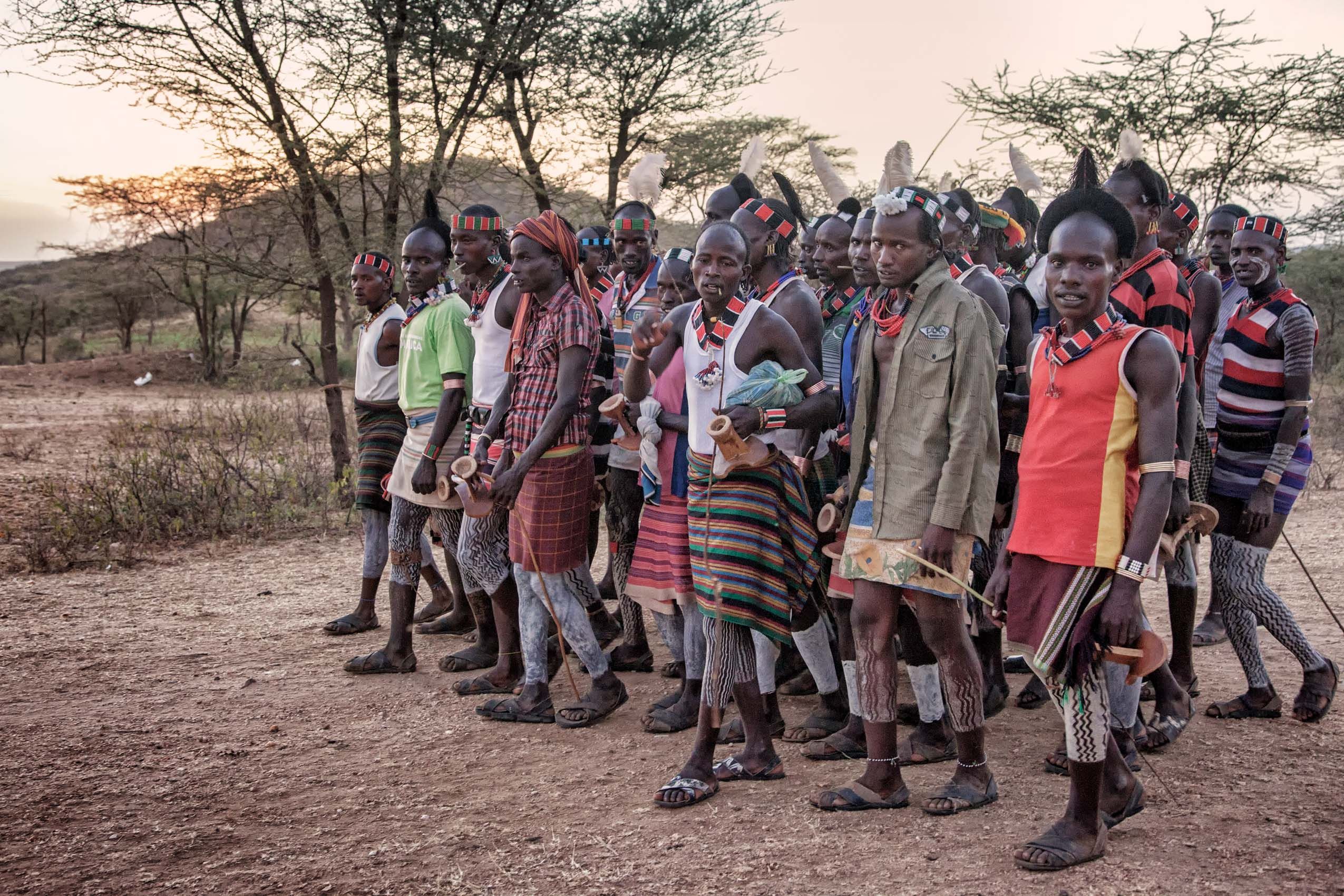ETHIOPIA: Among the Hamer
The Hamer are an ethnic group of farmers and pastoralists, numbering about 25,000, and living in the Omo Valley of southern Ethiopia. Their culture is noted for the women’s practice of smearing their tightly braided hair with a mixture of ochre and butter; for the men’s face decoration; for the distinctive styles of jewelry worn by men (feathers and beads) and women (metal chokers, and leather belts and bands studded with cowrie shells); and for the so-called Hamer Bull-Jumping Ceremony. In this rite of initiation into full Hamer manhood, a young man must run back and forth four times across the backs of a line of cattle in order to achieve the status of a “maza,” making him eligible to marry, have children, and own cattle. The daylong events, following the end of the rainy season, begin with the young men decorating themselves and each other while the women collectively dance. The young warriors of the group who have already achieved the status of maza also pare branches into switches with which to whip their young female relatives, who actively encourage the beating in order to demonstrate their loyalty to their male kin and to create bonds of obligation for future assistance and support. The scars of these ritual beatings are conspicuous on the backs of all adult women in the group. The jumper has his head partially shaved, his skin is rubbed with sand and with cow dung for strength; all he wears during the event are two crossing strips of bark for spiritual protection. The success of the jump occasions extended celebration and dancing, and the liberal imbibing of sorghum beer by all. This portfolio documents the cattle jumping ceremony itself and puts it into the context of the whole day’s activities in the village where I was privileged to spend some richly rewarding extended time. A selection of my Hamer portraits in black and white can be viewed elsewhere on this site.

